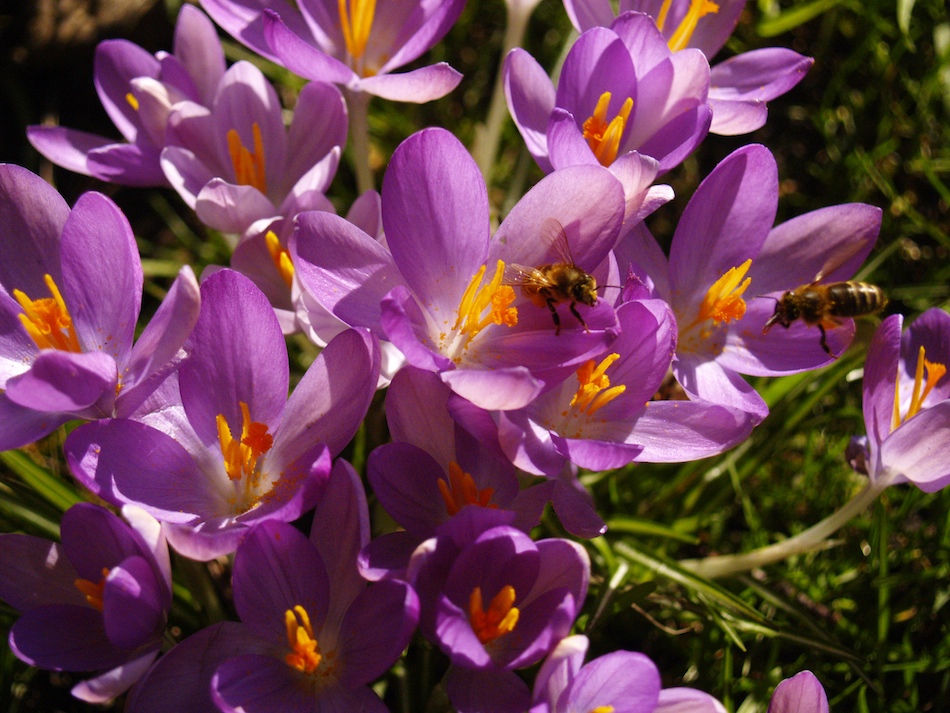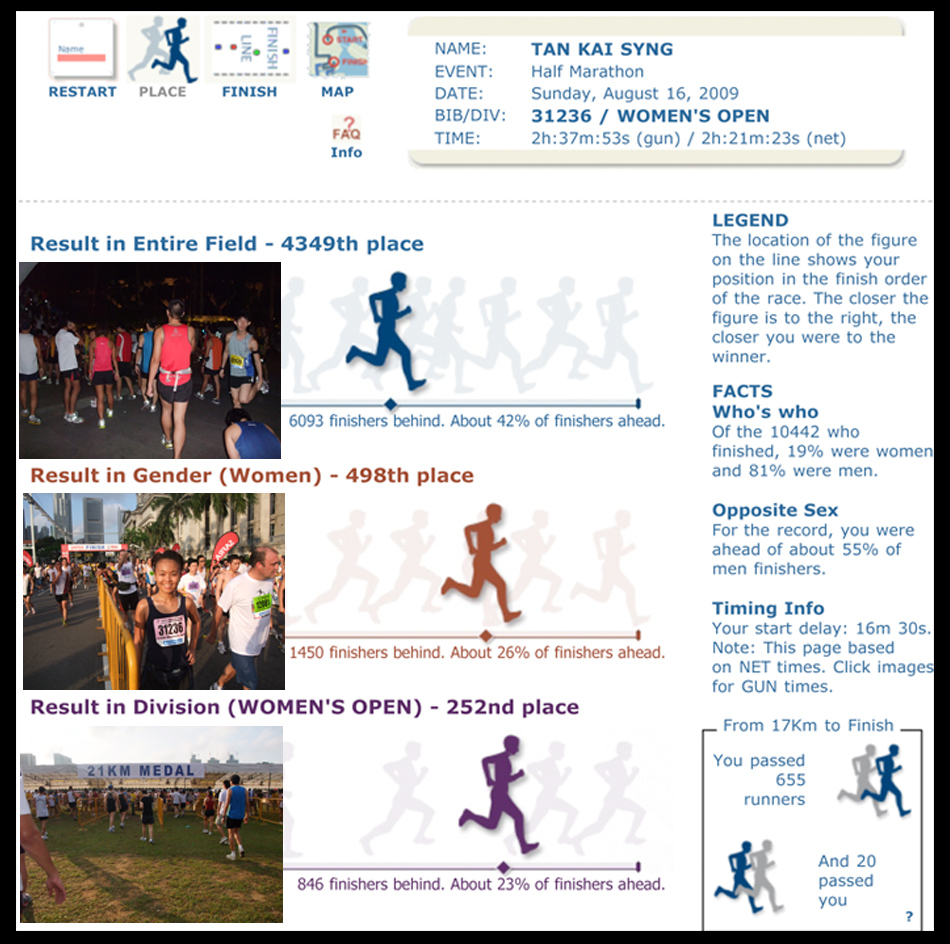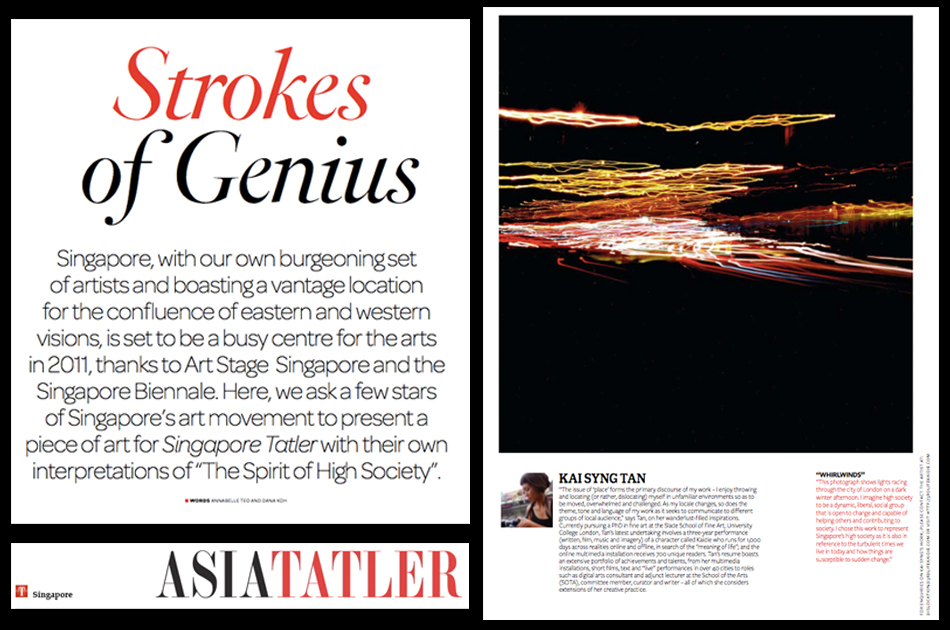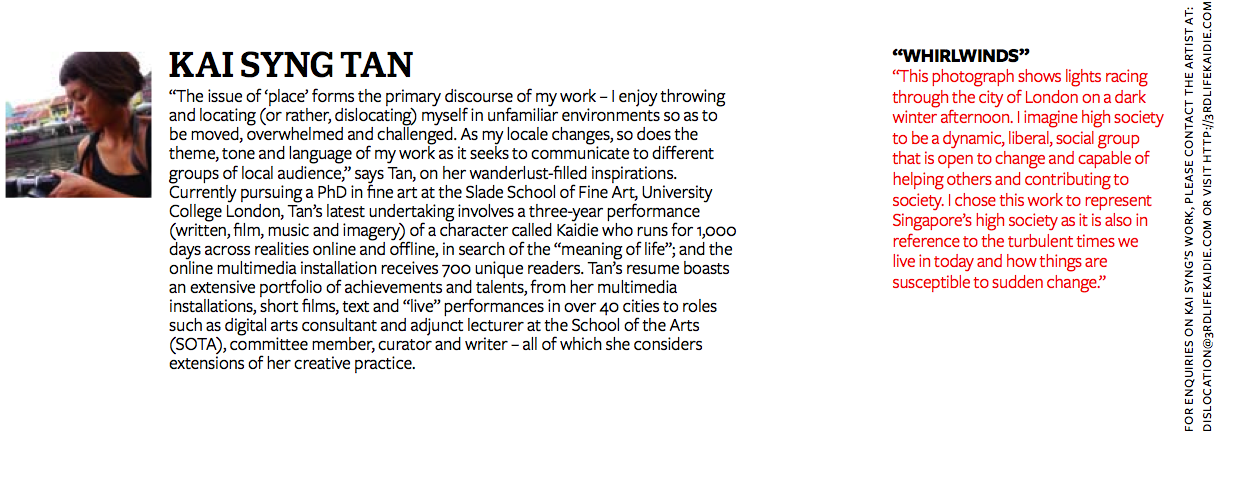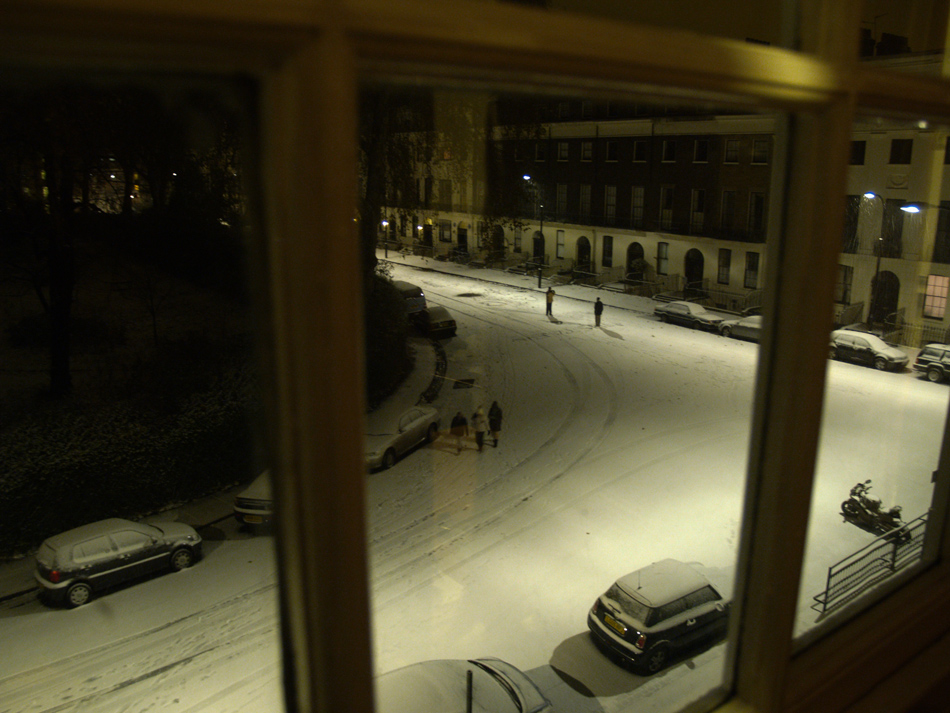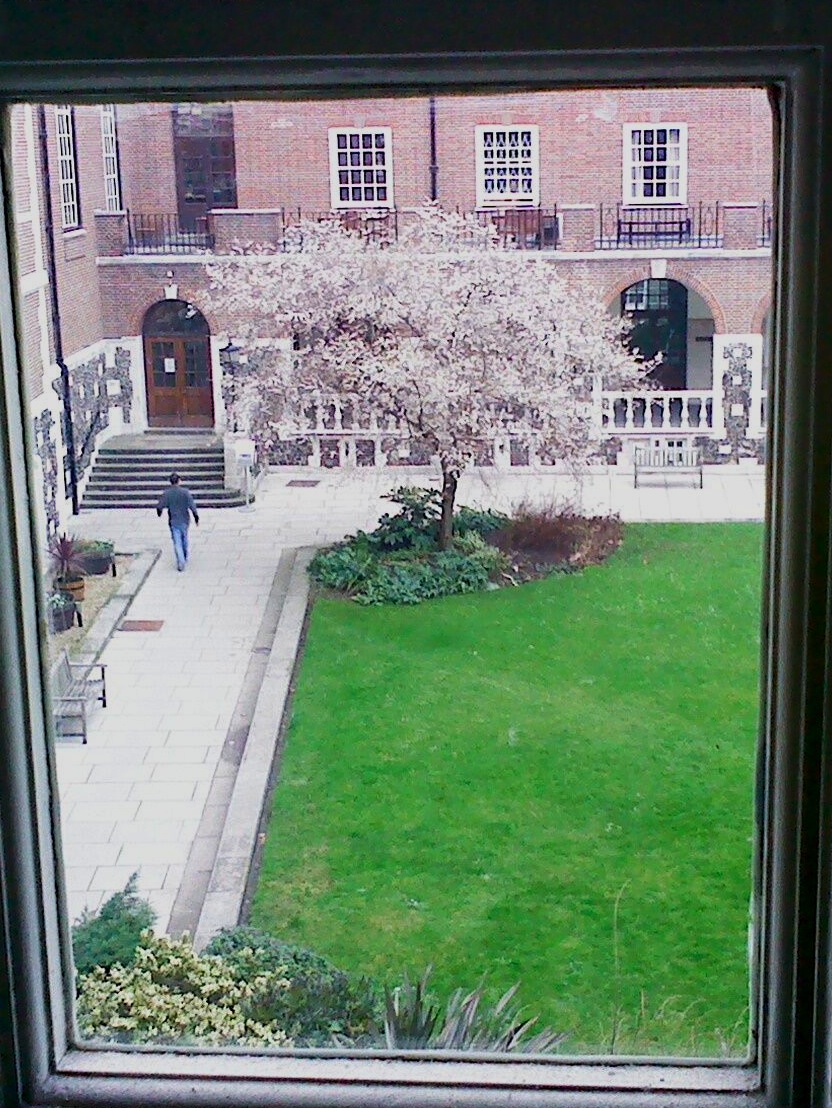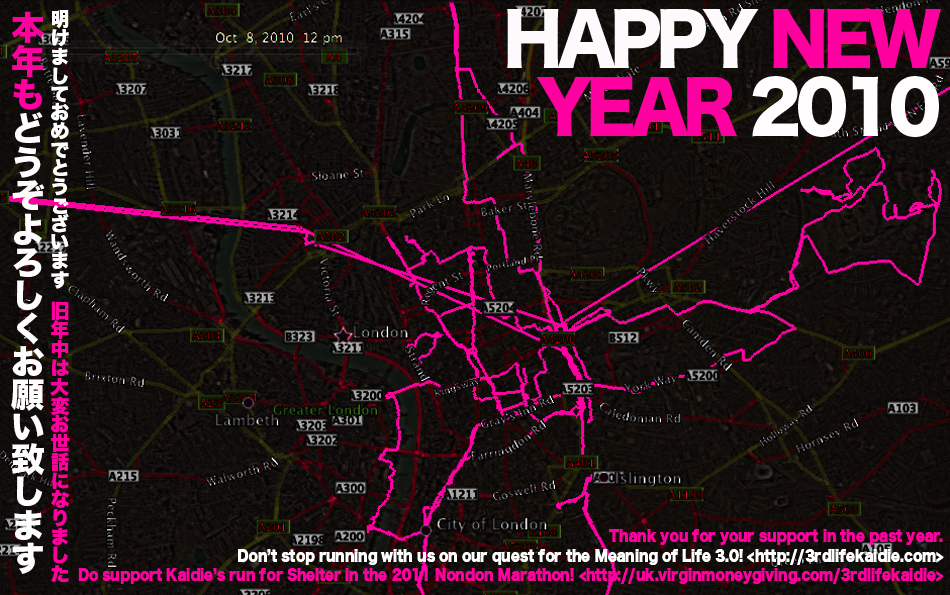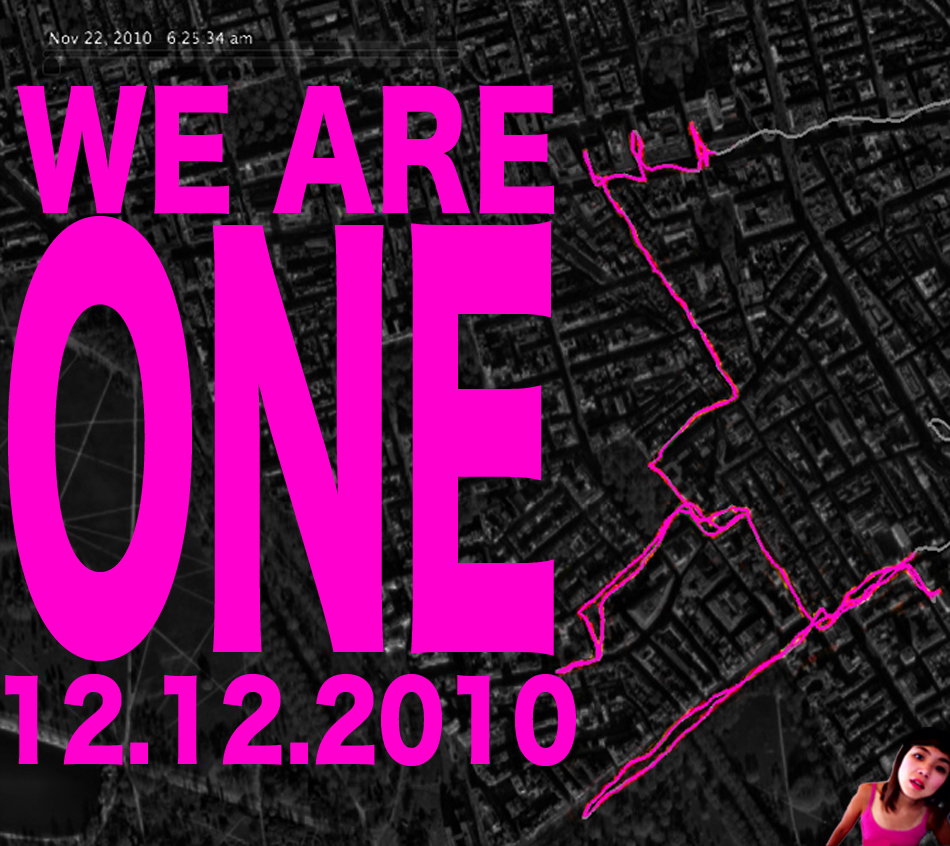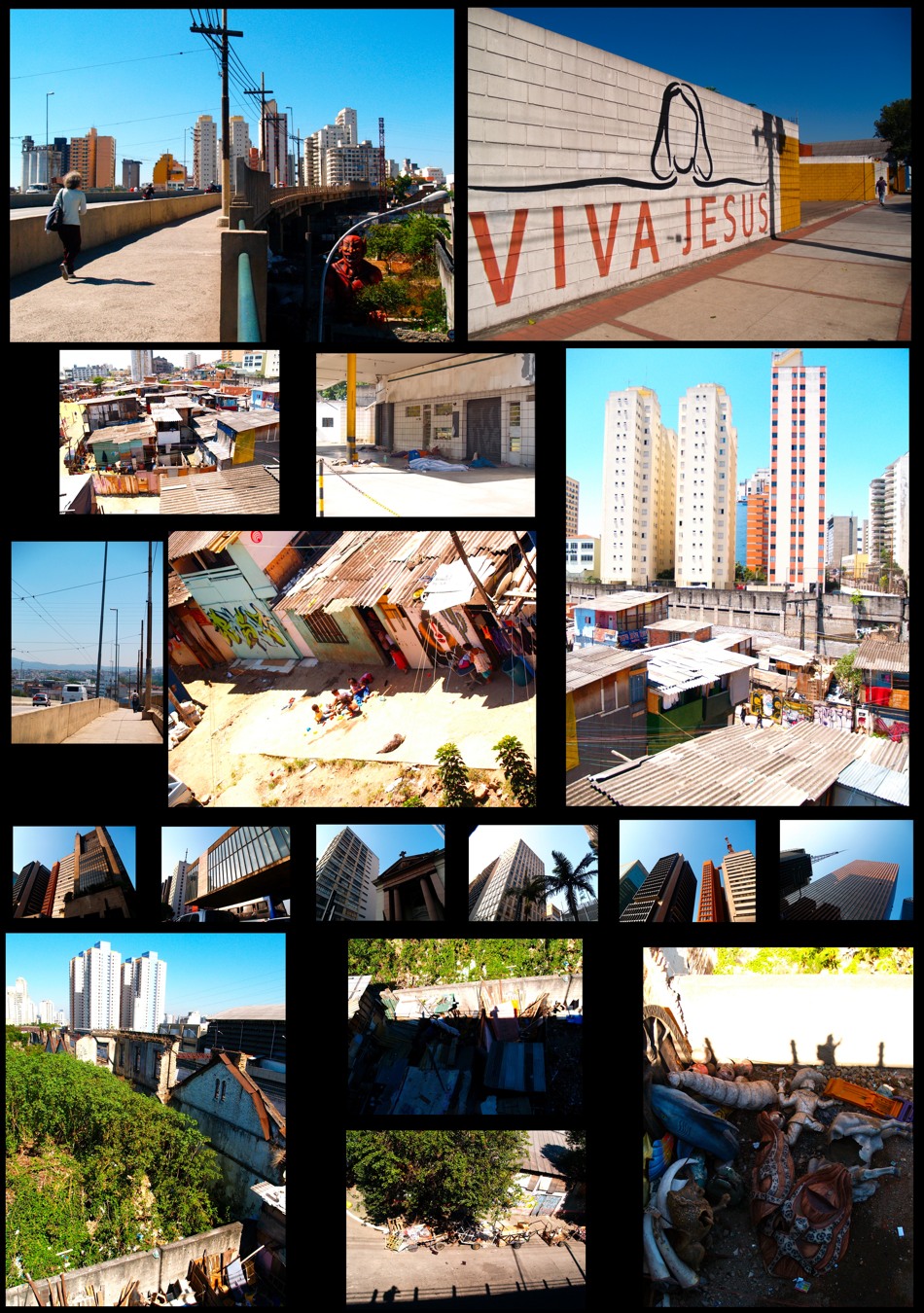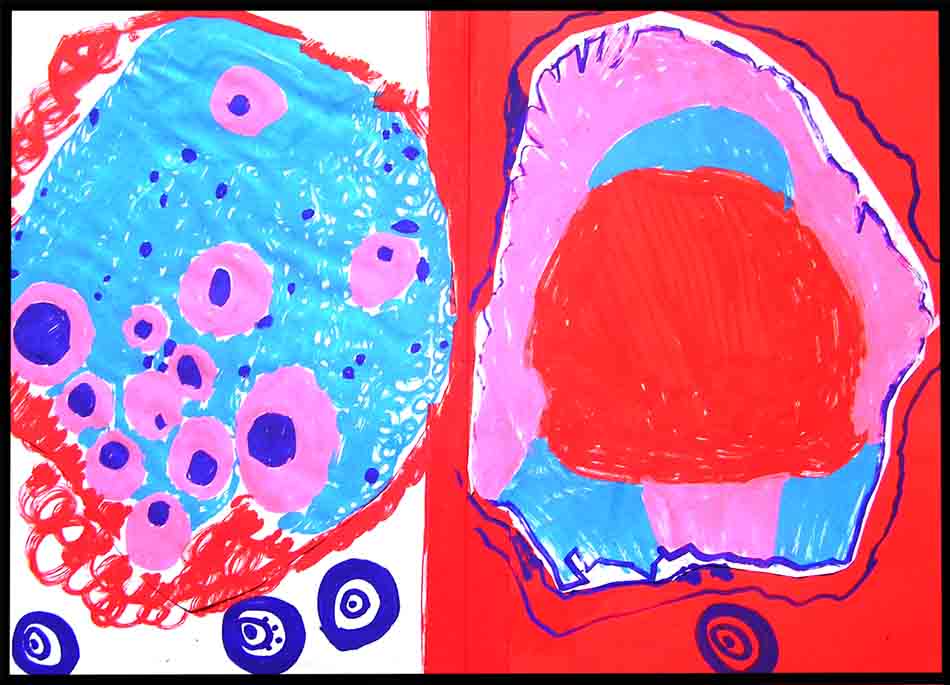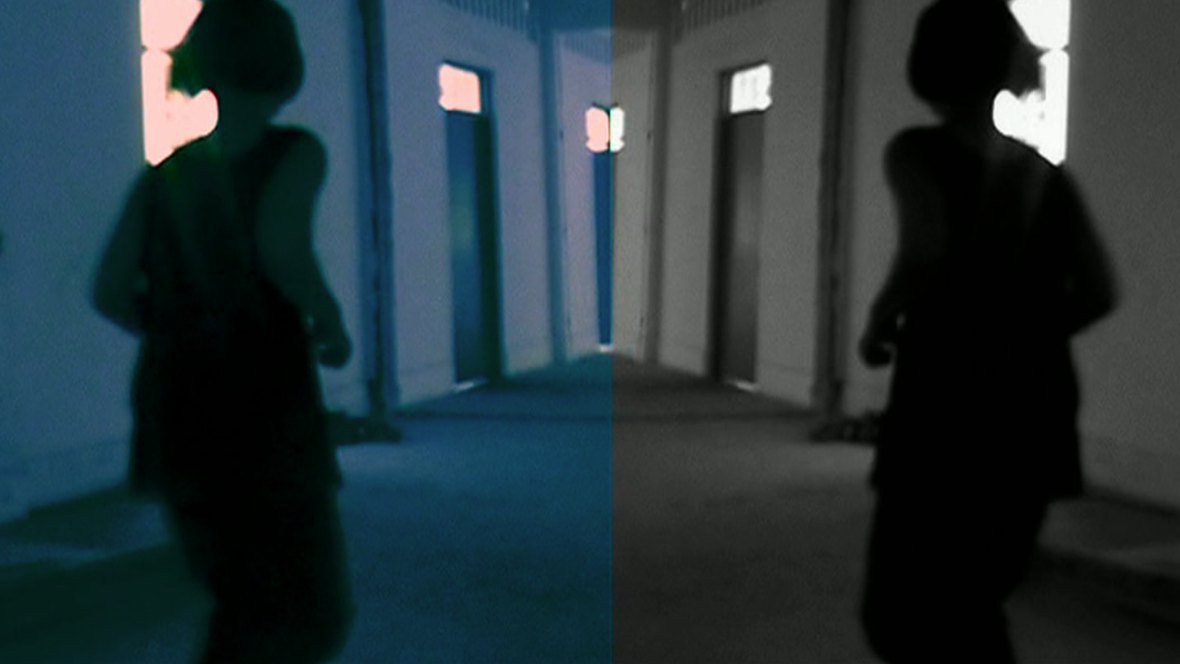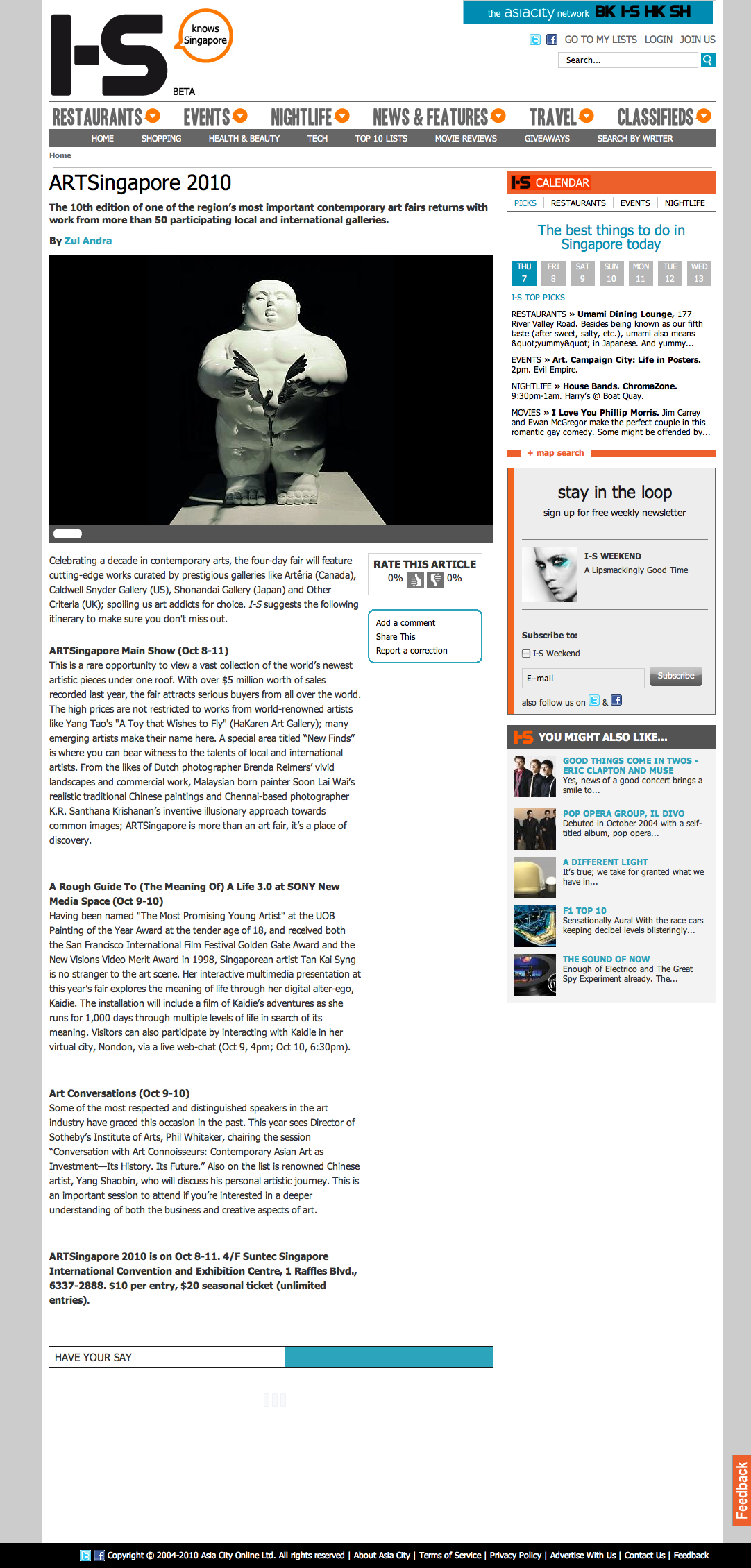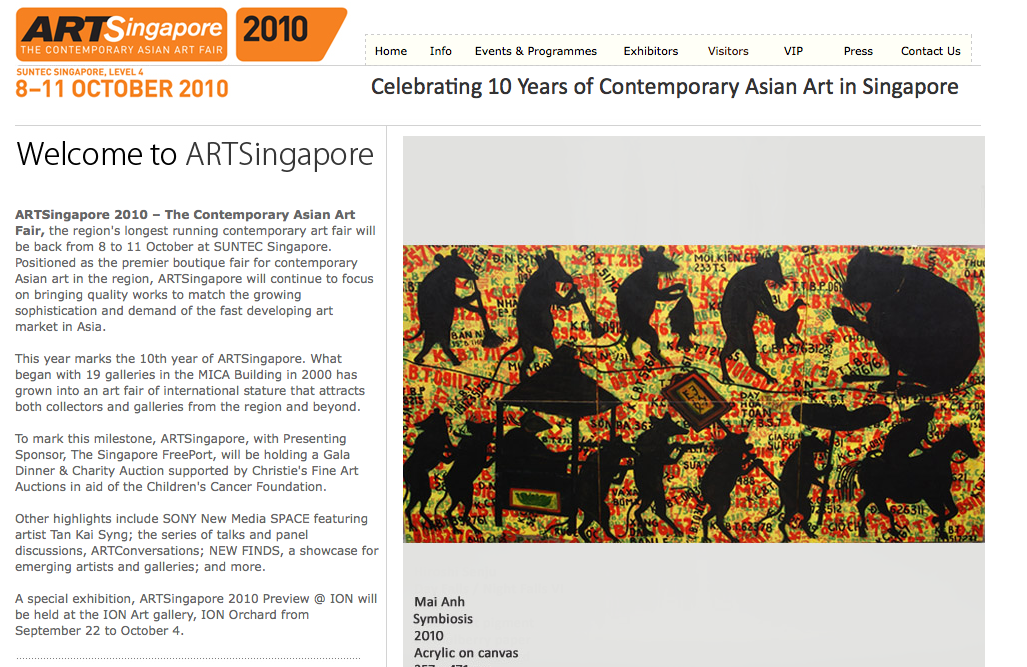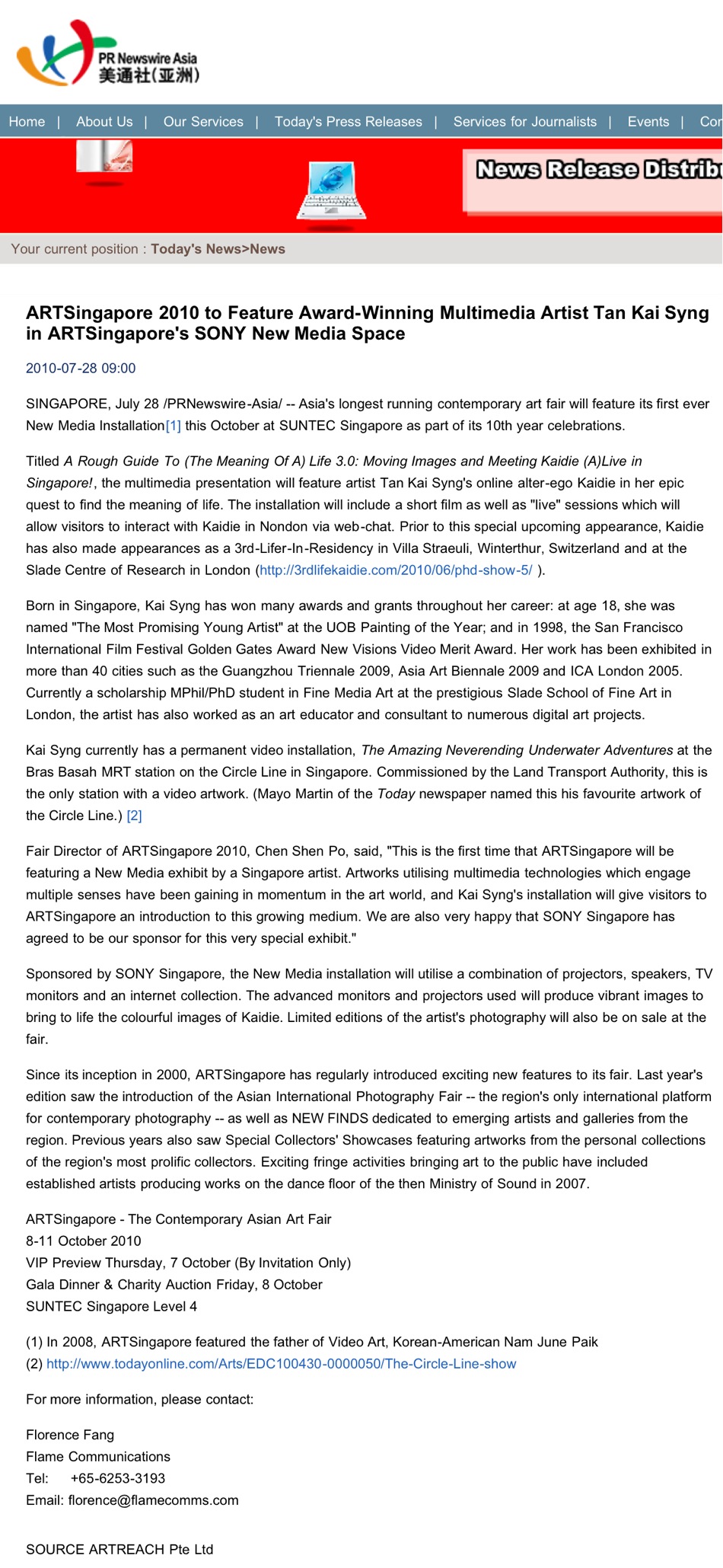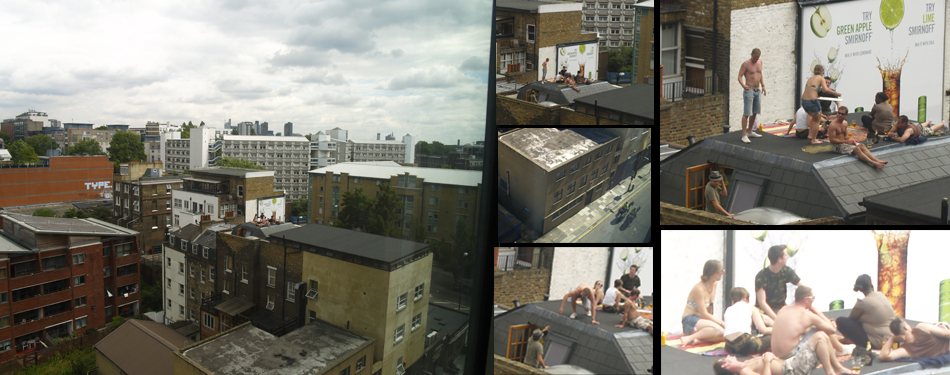RUNNING = LIVING = RUNNING. BUT WHEN WE HIT THE WALL MID-JOURNEY, HOW CAN WE FIND THE STAMINA TO COMPLETE IT?
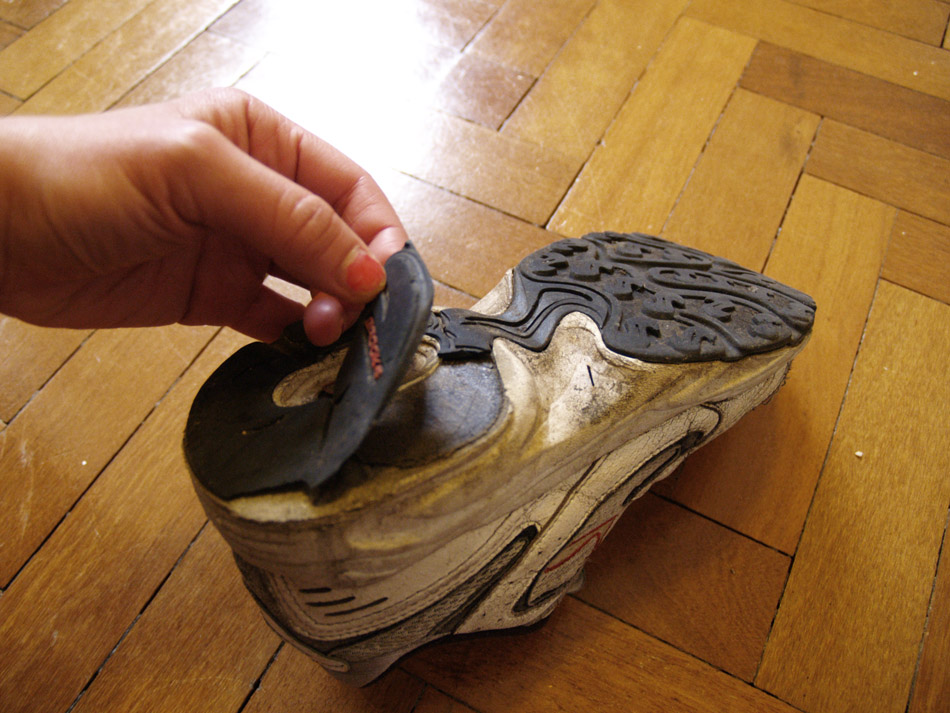
Broken. (Super-)Glued several times, but falling apart (looped, like a broken record, like living, like the cycles of life and death, like dying, like running, like running on quicksand, like running on slowsand, like not running, but running, still).
For me running is both exercise and a metaphor. Running day after day, piling up the races, bit by bit, I raise the bar, and by clearing each level I elevate myself. at least that’s why I put in effort day after day: to raise my own level. […] The point is whether or not I improved over yesterday. In long-distance running the only opponent you have to beat is yourself, the way you used to be.[1]
We journey forwards to the finishing line in a running session (or at the completion of a race, which is the epitome of a running session, with set rules and a clear beginning and closure). In life, we journey towards the finishing line of death. In the process, like writer Haruki Murakami, we desire improvement and progress in any given run, as we do in life itself. Yet, any long-distance runner also understands the dictum that when we run, we are essentially running against ourselves (and not our fellow runners). As Bernd Heinrich states of his record-breaking championship in the 1981 ultra-marathon, he was running it ‘all by myself, against myself’; ‘I’d done the best that I knew how at the time. That’s what mattered to me.’ [2] Contrary to the short distance sprint, the emphasis of the long-distance run is its process. Given the strenuous nature of running, pain and exhaustion are the Achilles heels of any runner, capable of literally and metaphorically bringing us to our knees. Especially in the case of ultra-running (of distances above 42km), it is when our body and mind are pushed so far that we are reminded of our limitation, vulnerability, and indeed, mortality. For Murakami, ‘learning something essential in life requires physical pain’ in most cases.[3] Yet, while ‘the hurt part is an unavoidable reality’, what matters is how we respond to this pain.[4] Thus, ‘[p]ain is inevitable. Suffering is optional’.[5].In bringing us close to death, pain is that which reminds us that we are alive. We run after pain because it reminds us of our mortality. An undertaking such as endurance running fulfils this basic instinct of ours. Like the endurance hunt, the race becomes a metaphor for life and death, except that instead of competing against the nimble antelope, we are fighting against ourselves, outrunning our own limitations. No stranger to pain, Murakami states that it is ‘precisely because of the pain, precisely because we want to overcome that pain, that we can get the feeling, […]of really being alive – or at least a partial sense of it.’[6] Hence, that which is at stake as we journey in the process of a run or life itself is how we respond to the ups and downs that confront us along the way. In another words, how we negotiate, manage and navigate our runs, and, indeed, our lives —which is the question that we are addressing in our thesis of Trans-dimensional Running For Our Lives! A Rough Guide to a Critical Strategy for our Technologically-Layered Multiverse .
In fact, Murakami’s What I Talk About When I Talk About Running can be read as a poetic discourse of the activity of running as a means to negotiate, manage and navigate his life and mortality itself.[7] Over a collection of essays, he discusses his peak as a runner (and writer), and contemplates about his own physical decline as a runner as he grows older.[8] In contrast to the image of a highly-successful novelist and athlete, the essays reveals Murakami as one ridden with anxieties and self-doubt about (his) existence. In tones not dissimilar to Antoine’s epiphanic laments in Jean-Paul Sartre’s existential textbook Nausea, Murakami ponders about whether he has overcome his ‘shortcomings’ as he ages (‘now here I am living in this unimaginable world’;[9] ‘wretched sort of feeling’;[10] ‘struck by how pitiful n pointless this little container called me is, what a lame, shabby being I am’;[11] ‘sad spreadsheet of my life that reveals how much my debts far outweigh my assets’[12]). In a particularly poignant (and humorous) passage, Murakami describes watching ‘young blonde girls’ swinging their ponytails ‘proudly’ as they run, and distils from it the metaphor of how ‘one generation takes over from the next’. He allows them to overtake him, for they have different sense of time, which is ‘the way it should be’.[13] For Murakami, ‘this is how the world is handed over in this world’. He continues to run his own run —and his own life— and comes to terms with (his) mortality:
[…] I doubt I’ll ever be able to run the way I used to. I’m ready to accept that. […] And time does its job much more faithfully, much more accurately, than I ever do. Ever since time began (when was that, I wonder?), it’s been moving ever forward without a moment’s rest. And one of the privileges given to those who’ve avoided dying young is the blessed right to grow old. The honour of physical decline is waiting, and you have to get used to that reality.[14]
[1] Haruki Murakami, What I Talk About When I Talk About Running (Random House Inc., 2009). p. 10.
[2] Bernd Heinrich, Why We Run: A Natural History, Reprint (Harper Perennial, 2002). p. 266.
[3] Murakami, p. 140.
[4] Murakami, p. vii.
[5] Murakami, p. vii.
[6] Murakami, p. 171.
[7] Thirty-three —which he notes was the age that Jesus Christ died and Scott Fitzgerald began to decline— was the age that Murakami picked up running (as well as his ‘belated, but real starting point as a novelist’). Murakami, p. 47.
[8] Murakami, p. 11.
[9] Murakami, p. 18.
[10] Murakami, p. 152.
[11] Murakami, p. 152.
[12] Murakami, p. 152.
[13] Murakami, p. 94.
[14] Murakami, p. 121.
NEAR-DEATHS BY CHOCOLATE: KAIDIE’S BATTLES WITH THE NEMESES (courtesy of JAMES ODLING-SMEE!)
In the past 450 days of our existence/run/adventures/quest for the Meaning of Life, we have been kidnapped, looked for love, found epiphanic enjoyment from the whiffs of aphrodisiac sausages in a Turkish Cafe, run a few races, fallen, fallen ill, ran in other cities, and battled ferociously against chocolate nemeses. The said cocoa-objects-of-desire-and-death have been provided online by one of our dearest co-runners, our Facebook Friend, Mister James Odling-Smee on several occasions as seen in the above images.
The latest Chocolate Nemesis baked lovingly by the multi-talented Mister Odling-Smee was supplied not in Life 2.0 online, but here and now in Life 1,0, in the primary world of observable and edible phenomena. Seen here is Herr Joerg Leib, clearly a man of the world as evidenced in the large map of the world decorating his natural habitat, and a mutual friend of the real life proxy of us and (the real life proxy of) Mister Odling-Smee. Who in this googleearth would have thought that out of the zillions of people of this and other worlds, and millions of people of Nondon, that the two Life 1.0, physical strangers but [?] Life 2.0 virtual friends of Mister Odling-Smee and Yours Truly share a mutual Life 1.0 friend – and in the form of Herr Leib!? Here the latter is seen holding a large cow-patterned tin, in which throbbed a heartstoppingly scrumptious Chocolate Nemesis. It was weeks of careful, 007-MI5-CIA-Mossad-KGB-level planning that the final transaction took place. Last Thursday, we finally came face to face with our Nemesis – the noun ‘cake’ seems a gross understatement, for the Chocolate Nemesis was so dense, so moist, so filled with goodness that every mouthful was heavenly. More than heavenly, if such a phenomena might be possible. It was neither too sweet nor too bitter, of a flavour that would please the hardest-core chocoholics of Life 1.0 and beyond. We demolished the cake with tremendous relish – and by Day 4 (Sunday) the battle was over. James Odling-Smee’s Out-Of-The-World Chocolate Nemesis won, many times over. We were floored. In ecstasy. We happily admitted defeat.
Many, many thanks to our middle-man-messenger Herr Leib, and many million more thanks to our wonderful baker-friend-co-runner James Odling- Smee. That is all we can say, as we run in our runny choco-intoxication.
30 DAYS TO RAISE THE FINAL £342 FOR OUR RUN FOR SHELTER AT THE 2011 NONDON MARATHON.

It costs £10 to print our name on the vest (£1.67 each alphabet!!) so at the meantime, we have printed our name digitally - free of charge!
Here we are in the Shelter vest that we will wear on 17 April Sunday at the 2011 Nondon Marathon. Thanks to the wonderfully generous support of 38 of you in the past 3 months, we have raised £1158 for the housing and homelessness charity. With your blackmail, we have been training steadily, clocking in 3 hours for 30km. That said, we may reach the destination at 1pm, which is 4 hours after we begin running the 42km, or Tuesday morning at 40 hours after we take off. In the next 30 days, we hope to raise our final £342. This afternoon, STEPHEN WARD, who sells fruits in front of the Goodge Street station and who is also a runner, very kindly donated £10 for our effort! THANK YOU STEPHEN!!
** As we run we try to make sense of what has just unfolded and is unfolding in Japan – and can not yet make sense of the scale of devastation. This was where we lived in a previous life for 3 years, and during when there were constant reminders of the preparation of ‘the big one’, along with countless drills. Yet, no rehearsal or preparation can help us come to terms with what the magnificent destruction. Let us also find ways to help and do what we can: click here to see how we can show our support. **
WHY RUNNING ALONE IS THE BEST/ONLY WAY TO RUN: Like Murakami, Turing and Colin, we run because we seek solitude. We are solitary beings; hence we run long distances. Go on, call us selfish.
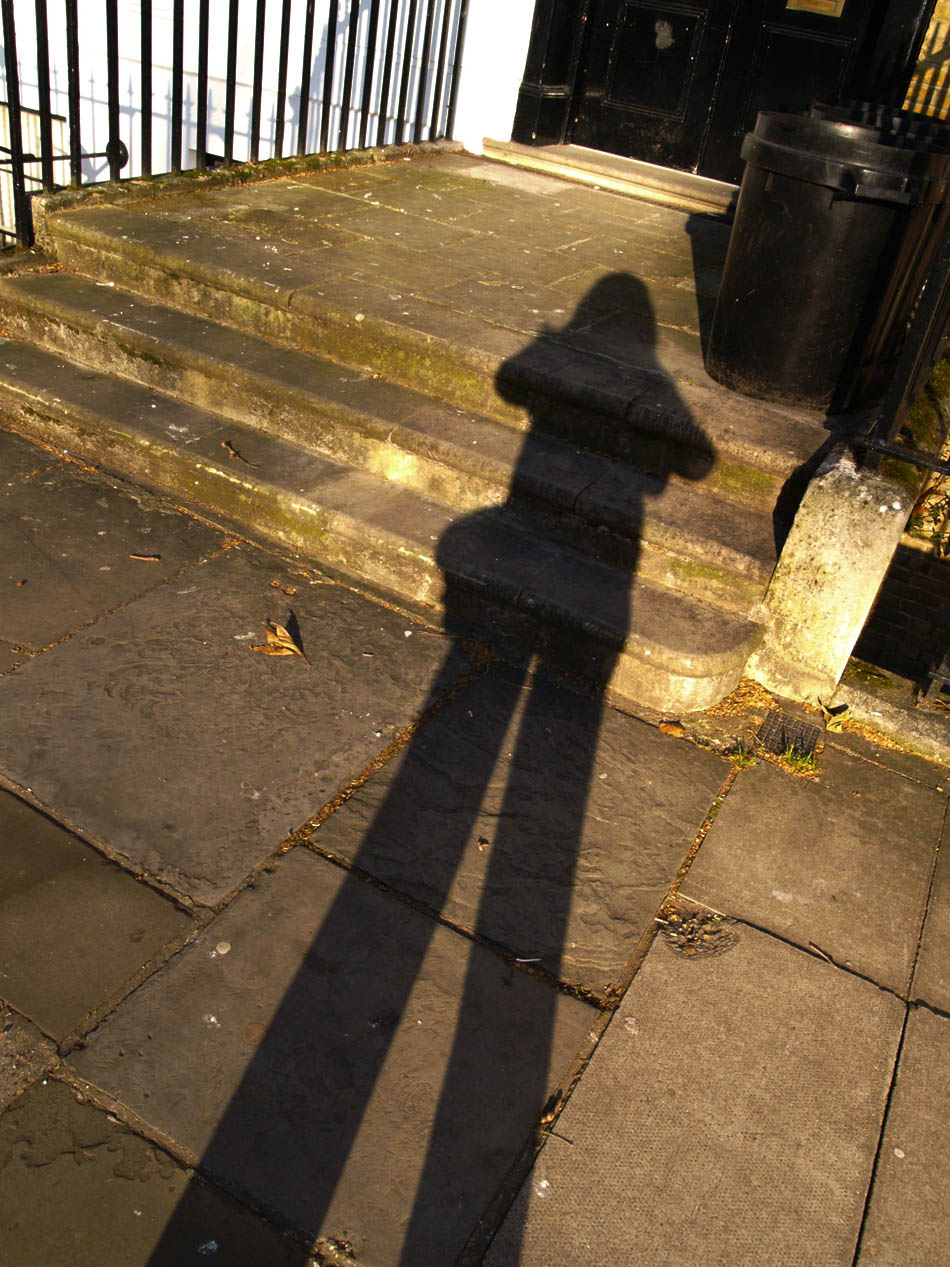
We (prefer to) live, run and die alone: in the plastic dustbin of history. Nonetheless, nice to meet you. Nice to have met you. Nice meeting you. WC1 Nondon Spring 2011.
The narrative of human beings is (or, we should say ‘the narratives of human beings are’) populated / infested by wandering hermits – St Jerome, Anthony of Egypt, Basho, Jesus Christ, Lao Zi, Buddha, Confucius, Mencius, Chatwin, are but some of the named itinerants who have been recorded and mythologised, and have captured our imagination. There have been many more unnamed. As they traversed the world(s), they meditated, wrote, spoke, sang and came to terms with their being, in one way or another. (Or not – and spend their lives making tours and detours, making false moves and dying pathetically, rotten, sickly, unenlightened, bitter, as sickbags, like the rest of us). To be sure, the story of mankind (which sounds rather grand, does it not?) is also populated by the gregarious, the socially-adept, those who prefer direct action, so on, and so forth. Which is exactly the/our point – the so on and so forth-ness of things – that there are different paths each prefers. Each of us has different means of getting there; each of us has different paths that works for us. We respect yours, and you, presumably, ours. When we cross paths and run into each other, we may fight, have a tussle, a tumble, or two, or more, a war, civil, or uncivilised, or cold, or silent, or ongoing and unresolved. Or, we may sparkle, together, shine, tango constructively and powerfully, like the clash of civilisations, meeting of 2 different chemicals to produce a third, new, synthetic (in all meanings of this word) possibility. Or, more mundanely, it is the combination of the above 2: a process, of a mixture of curiosity and argument, debates and agreements, hits and misses, fall outs and make ups, negotiation and mediation (‘compromise’ is a word we loathe, for it is less constructive but a giving-in, a weakening. The best, or rather ‘best’ encounters are not weakenings, but processes of strengthening. In the ideal world). At the meantime, we blame each other for intruding into our lives, as we confusedly try to work it out, yet, also, perhaps, at the back of our minds understand/believe that something interesting, something larger than each of us alone, something more wonderful and further than what each alone can achieve or where each could travel/go. Hence we work on it. Or not, should we run out of stamina. (Or faith? If there is such a thing, that is! Baaaaaaaaaaaaaaaaaaaaah.)
Screw this – this thread sounds romantic, old-fashioned, esoteric, irrelevant and plain silly.
Enough rambling.
Let us get back on track.
Restart (contemporarised, main-streamified):
The nature of long-distance running over hours and hours almost demands that it is a solo undertaking. For world champion marathon runner Paula Radcliffe, while there are times when running can be ‘a big social thing – go for a run, catch up with friends and have a really good chat’,[1] running for her remains a primarily solitary activity, ‘during which I just […] have my time.’[2] To be sure, we can run with pace-makers or pacers, whose task is support runners to ensure that we are not over- or under-exerting ourselves. In particularly demanding races such as ultra-marathons, during which runners can become so exhausted as to encounter hallucinations or lose consciousness, such collaborations can be a matter of life and death. As Christopher McDougall says, ‘a tough pacer can save your race; a sharp one can save your life’.[3] Yet, the writer and ultra-marathoner also refer to pace-makers condescendingly as ‘mules’, adding that ‘[p]acing is so gruelling and thankless that only family, fools and damn good friends let themselves get talked into it.’[4] Hence, if we wish to make (sporty) new friends, the conditions circumscribed by activities such as soccer, aqua-aerobics or the physically-gentler activity of walking seem more promising.
The solitary nature of long distance running in Life 1.0 is epitomised in (and mythologised by) the title of the book and film, The Loneliness of the Long Distance Runner. In this ‘Kitchen Sink’ classic[5] written by Alan Sillitoe in 1959, it is during our protagonist Colin’s solo runs that he is able to have ‘his time’, away from the physical, emotional and economical confines of his reality, including the Borstal prison to which he was confined to. Indeed, running was said to have been the ideal activity for Alan Turing, as it mirrored the loneliness of his journey as a scientist.[6] Given that such intellectual and creative work demands intense concentration, there are scientists as well as artists who may prefer working in isolation. (That said, there are clearly many who prefer to work collaboratively.) (Clearly, too, is that there are not so many artists who undertake endurance sports, apart from enduring many hours of debauchery, which we excel in as well). The same intensity required of a scientist’s creative process is not dissimilar to that of an artist or writer. As a matter of fact, novelist and marathon runner Haruki Murakami admits that he actively seeks out solitude, and grants that ‘especially for someone in my line of work, solitude is, more or less, an inevitable circumstance.’[7] Running suits him perfectly, as ‘[a]ll you need is a pair of running shoes and you can do it anywhere. It does not require anybody to do it with […].[8] He adds:
I’m the type of person who doesn’t find it painful to be alone. I find spending an hour or two everyday running alone, not speaking to anyone, we well as four or five hours alone at my desk, to be neither difficult nor boring. [9]
This is our chosen way of life. This is how we run (navigate, negotiate and manage) the/our world(s). We are neither Buddha nor Jesus (in case you didn’t know), but Christ!, to each her own. Just as there are those who prefer to travel alone, there are those who love it communal; just as there are lonely long-distance runners, there are sprinters who fear loneliness (and then of course, there are those who prefer other modes of locomotion to running, and then those who prefer not to move at all. Which is all fine. We say ‘fine’, though it is of course not up to us really. Not at all. Nor do we bother, though our job is to spread the gospel of our world-shattering thesis of trans-dimensional running, which is what we have been going on and on about, though of course, that is an other story, and we may not want to go into that again, not just now, any ways. Which we ourselves are getting extremely tired of as well. In any case – which ever ways. What we want to say is, at the end of the day, to each her own).
Go on, call us selfish. Like it or not, we are moving on. Take it. Leave it. Which ever. May we cross paths again. Or maybe not. See you later. If ever.
[1] Patrick Barkham, ‘Patrick Barkham Goes Running with Paula Radcliffe’, The Guardian, 16 December 2008, section Life and style <http://www.guardian.co.uk/sport/2008/dec/16/paula-radcliffe> [accessed 25 September 2010].
[2] Barkham.
[3] Christopher McDougall, Born to Run: The Hidden Tribe, the Ultra-Runners, and the Greatest Race the World Has Never Seen (Profile Books, 2010), p. 88.
[4] McDougall, p. 89.
[5] The Kitchen Sink genre refers to the British cultural movement of the 1950s-60s. The social-realist works, created by filmmakers and writers called ‘Angry Young Men’, are anti-Romantic, often featuring (anti-)heroes of the working class who are anti-establishment. ‘Author Alan Sillitoe Dies Aged 82’, BBC, 25 April 2010, section Entertainment <http://news.bbc.co.uk/1/hi/uk/8642720.stm> [accessed 31 October 2010].
[6] Anish Chandy, ‘Alan Turing Biography’, Buzzle.com <http://www.buzzle.com/editorials/4-5-2005-68126.asp> [accessed 12 July 2010].
[7] Like Murakami, Turing was also known to be a loner, although it could be argued also that this is in part due to his inability to live as he wished because of his sexual orientation (homosexuality being a crime in the 1950s in the United Kingdom).
[8] Yishane Lee, ‘Haruki Murakami Interview from Runner’s World.com’, 2004 <http://www.runnersworld.com/article/0,7120,s6-243-297–8908-0,00.html> [accessed 26 September 2010].
[9] Haruki Murakami, What I Talk About When I Talk About Running, Reprint (Harvill Secker, 2008), p. 15.
LETTER TO THE DEAD
How are you? […] Look, I am your beloved on earth, so fight for me, intercede for my name! … Drive off illness of my limbs! May you appear for me as a blessed one before me, that I may see you fighting for me in a dream […].
Written on a funerary stela or inscribed tablet,circa 2100 BC. As seen at the enchanting Ancient Egyptian Book of the Dead: Journey through the Afterlife, seen recently at the British Museum, in preparation of our (impending?) death.
Mathematically-speaking, we SHOULD take 4 hours to run 42.1km. Non-mathematically-speaking, we may take 40 hours.
How long will we take to complete 42.2km at the Nondon Marathon on 17 April 2011? We will finish, by hook or by crook or by crawling. But the million-pound (or £1500) question is, in what time? To be sure, every run is different, and every race – a particular competitive run session with a specific start and finish across a set route; a heightened run session – comes with its own sets of quirks. The variables are infinite (climate, route, scenery, traffic, fellow runners, clothes we wear, if the race is well-sign-posted, audience/spectator-support, number of yummmmmyyyyy jelly-babies [and Snicker bars] we manage to pop into our mouth en route at feeding stations, et al), but we can begin by examining our running and race history: (Go ahead and mock, spit, laugh at us, but you would have realised by now that we are painfully slow coaches, such slow runners we are that we are probably better off walking, but at least we have lasting power for the endurance race of our lifetimes…)
1) 2010 March: 10km race by the Friends of Medicin Sans Frontieres Nondon: This was an easy race of 10km which we completed in 52 minutes, which works out to be a speed of 11.54km per hour (or 7.17 miles per hour), or a pace of 5 minutes 12seconds for every 1km (0.822 minutes per mile) It began as a crisp early Spring morning but turned 8 degree celsius, so we were dressed in short-sleeved and long tights, although we were carrying the burden of stomach cramps (!!! TMI !!!). In this race, we raised money for the Medecins Sans Frontieres. We had been kidnapped before the run, was released on time by The Good Pirate.
2) 2010 September: 42.2km: Farnham Pilgrims’ Marathon, Surrey. This was our first ever full marathon, which we ‘accomplished’ (sic) in a disgraceful 5 hours 29 minutes! We have plenty of excuses, however: 1) it was off-road in a hilly terrain – we stopped to WALK at a steep hill climb at a point (it was said that most runners had to add 30 minutes to any of their times for this race) 2) We had spent the entire summer running all over Nondon, in a bid to train for our first ever marathon. However, in the final 2 months, we were brought down by injury (tendonitis and shin splint), which came with us to Farnham. Yet we do not fret, and were delighted to have completed the race. All in all, it was a most wonderful experience, against the gorgeous and meaningful mise-en-scene that the pilgrims had once walked, the fellow runners a tremendous joy to be with, and beautifully organised. We also raised a weeeee bit of money for the Farnham hospices.
3) In a previous life: 2009 August, Singapore, 21km (13.1 miles) SAFRA Bay Run Half-Marathon: This was our first ever race since casually picking up running in January 2009 in a previous life, at the same time of still being chlorine addicts. We took 2 hours 21 minutes – which is the amount of time taken by the world’s elite runners to complete FULL marathons!! However, we were not displeased, with the high humidity, and at 30 degree-celsius of the (paradisal) tropics. We are proud however of the fact that in our final 4km sprint, we managed to bypass 655 men and women (and yes, allowed 20 to bypass us). Running alongside more than 20,000 people of all size, shape, age and colour was also tremendously enjoyable. By default, happiness and pleasure are inevitably short-lived- but our entire 2 hours 21 minutes was a skyrocketing morphine-high. It was an extraordinary trip.
So. How on (google)earth would we fare on 17 April 2011?
1) For the first / last 450 days of our lives, we have been working hard at our running. Outside of a race, our comfortable pace is approximately 10kmh – 10.5kmh. At this pace, there is neither exertion nor discomfort. (Under artificial conditions, inside the gym, our average is around 10.5kmh – 12kmh, though this figure we should ignore, since it is climate-controlled, and we are running on machines that move nowhere, hence using different muscles of our body. The psychology of such locomotion differs from that outdoors as well)
2) Since February, we have been training longer distances (20km and above), but our fourth toe on our right feet has been harvesting a blister (!!! TMI !!!) This has never happened previously so we are slightly worried, wondering if we should go ahead and buy a new pair of shoes of a slightly larger size. Yet, already armed with three pairs of trainers, we do not want to buy another pair right now. Then there is also a new bone-like thing sticking out of our left feet recently, that prevents us from wearing any shoe without feeling pain. (!!! TMI !!!) Again this is new, and did not happen in our Summer training.
3) The past year of running means that our technique would have improved, but at the same time, we are aging as we speak. We are juvenile at 430-days-old, but because we have only 1000 days in our lifespan, we are nearly middle-aged. While we come with the charms and beauties of a mature wine and even more mature blue cheese (as well as iron-will power, truckloads of stubbornness, and plenty of drive), we might not win a spring chicken in a photo-finish. We will come back to this issue of running and mortality in a separate post.
4) As anybody knows, there’s such a silly law called the law of diminishing returns. Whichever sillier eejit came up with it, we have no idea, but when it comes to a slowburning, longhaul endeavour as a long-distance run, no one is sparred from this law. We can get increasingly worn out and deriving less and less satisfaction from the run over hours and distances. And from experience, we know that we are excellent practitioners of the law. This can translate what should take 4 hours into to a pathetic epic 5 hours (first 10km takes 1 hour, because we are warming up and do not want to over-exert; for the next 10 km we dip a little, as we are still conserving our energy at 1 hour 10 minutes; then the 30th km takes 1 hour 20 minutes, and for the final 12km, we have the sudden epiphany that we have to get our arses moving, and hasten a little but alas it is too late as our glycogen-levels would have deteriorated so we complete it in 1 hour 30 minutes).
So there we have it. On 17 February Sunday, we may take anything from 4 hours, or, 40 hours.
But let us think of positive thoughts. Next year, in our final year of existence, we would like to sign up for the midnight sun run in Norway. How beautiful and hyperreal an experience it would be. And, with all that sunlight one cannot possibly sleep anyways, so why not go for a run. For a few hours, the duration of a sleep. We currently devote about 8 hours of exercise each week (at least an hour a day); training for a marathon means a minimum of 10 hours or exercise each week. We must not neglect our run in other dimensions, so this running about in Life 1.0 may be taking up just too much time. We decide that the half is the best distance for us, also since we can sustain happiness for a maximum of 2 hours at any one go. Anything beyond that, at 4-5 hours for instance, the law of diminishing return sets in and the dreaded dip, the hitting-of-wall happens. 10km races are too fast/short. Hence, we intend to take part in the 2012 Bath Half Marathon. With a companion.
MONSTER (a poem of love and its opposites). HAPPY VALENTINES DAY.
Premiered at Oxford University UK, at the ‘Human- Machines, Mechanized Modernity, and Mass Subjectivity between Asia, the Soviet Union, and North America in the Twentieth Century’ conference, June 18-20, 2009. Music by Philip Tan. Special thanks to Aaron Moore, Tina Chen, Sarah Teasley. Created by a predecessor of Kaidie’s in a previous life, Kai Syng Tan, May 2009 Singapore. The opening lines in the 2nd act of the film are taken from Cascando by our most beloved Samuel Beckket.
Monster is a video poem seen from the point of view of an elderly woman, who really is an imagination by the artist of herself in the near future. Monster addresses man’s eternal obsession in modifying his body and nature in a compulsive bid to ‘improve’ himself. Such notions as the frailty of the body & flesh, and how our body-machines decay and imaginations of means through which we sustain/prolong/improve on them, are teased out. With the classic allegory of Frankenstein as a point of departure, the work posits the Man vs. Machine/Monster argument as a complex and layered relationship that is at once dependent, violent, obsessive, loving and destructive. While ‘I’ (Man) have created ‘you’ (Machine) out of a need for survival, ‘you’ have fought with me against (my) nature, but entrapped me nonetheless; my selfishness, greed, ambition and insatiability has led me to create an indomitable Monster/Mutant that is increasingly out of control – yet I remain faithful, and continue to love, nurture, and protect you. And I get hungrier still. This man/machine dance/wrestle is a powerplay that is paradoxical, grotesque and tender at the same time. Incorporating text, performance and animation, Monster is accompanied by a haunting soundscape made up of sounds from construction sites – an all-too familiar sound that fills the artist’s ears in the high-tech Asian miracle city that she hails from. The shiny images of the city-state in a relentless process of construction and rebuilding are juxtaposed with personal, intimate images of everyday objects photographed in the artist’s home – used, forgotten, dusty as they are. We go up close to the skin of an elderly lady, whose life overlaps that of her daughter’s. Happy Valentine’s.
WHY WE ARE RUNNING FOR SHELTER
We exist/live/run, in order to look for the Meaning of Life, and we run not only in real life (what we call ‘Life 1.0’) but online (what we call ‘Life 2.0’), as well as in hybrid realities of mobile Internet (what we call ‘Life 3.0’). As we run across the various dimensions, we call our running ‘trans-dimensional running’ (ASTOUNDINGLY CREATIVE NAMING INNIT!!!). While it would made our lives easier if we only sat at our armchair and desktop too cook up a fabulous tale that works perfectly on paper (and screen), we have taken upon ourselves (how grand!) to take up running in real life as well (big deal!). We reckon that while we are at it, we might as well make it meaningful for others as well (hopefully, although we [think we] harbour no delusions of self-aggrandisement as to how much our existence makes any difference to anybody else).
Charities exist to fight for meaningful causes. When faced with the necessity to make a decision as to which charity to run for in the upcoming 2011 Nondon Marathon (IN 70 DAYS!!), we selected Wateraid and Shelter , as we reasoned that water and housing are but the most fundamental needs of any being. When Shelter, the housing and homelessness charity got back to us, we were absolutely delighted.
As restless and insatiable beings, we have always been peripatetic, as we traverse the worlds and lifetimes, necessarily in solitude, but doing our best in each life and dimension as well as we can. This is by no means a unique position – with today’s highly mobile population, and with the ubiquity of smart mobile gadgets, we have become location-independent as ‘digital nomads’, in this Life 3.0. Which wonderfully coincides with our own attempts to continually strip ourselves of baggage (in a previous life, giving up the paintbrush and canvas in 1995, for the film camera, then the video camera, and today, with only our laptop as not only our studio, but our life itself, as we store our data on the invisible ‘cloud’ online. A compulsive reduction of clutter, and the active application of the [Buddhist] dictum of non-attachment that nonetheless lies in direct contradiction with the instinct to hoard, to hold on to things… Short of stripping ourselves of ourselves, what next?????????????????????). Yet we are well aware that this discussion is rich. There are many, many who are not itinerant by choice, for a vast complex web of reasons. How can those who have the ability to make such a choice, respond to those who do not?
As runners, we do the only thing we can do, that is, to run. As we have said repeatedly, our running is but a small (and futile?) gesture in the scheme of things, but a small step towards an attempt to not be a part of a/the problem. If that is at all possible.
With the political and economic climate still looking difficult, please help us support the work of Shelter. The images show us the affordability – or rather, un-affordability- of living in London for those claiming housing benefit for the next 5 years, when the cuts by the ConDem Government takes place. This research has been compiled by Alex Fenton, research associate of the Centre for Housing and Planning Research of the University of Cambridge (5 November 2010). As Nondoners, we are concerned. Nondoners forced out of Nondon because of prohibitive prices – where can these Nondoners go? Will this become a Nondon that is populated only by a certain group of the society?? Where can these Nondoners run to? What would that Nondon be like??? What sort of Nondon do we want???
IN 2011 JANUARY 11, WE (Kaidie, Kai die, Kai live, Kai Syng Tan, dead Kai) POPPED UP AT ASIA TATLER (Singapore).
As you well know, we are highflying, highlycultured, highlycultivated, highbrowed and hightea-ed. At the same time, we are thick as a slice of 14-month-old Tesco’s nofrills white-sliced bread (made of highly-refined plain flour!!), and our humour, as you our dear Reader knows well by now, is lowbrow and scatological. Yeah baby. Nonetheless, at the very least we do have a sense of humour. We are uncertain if many other people can say the same. Our life as it is has been fluctuating high-and-low as usual, but a few weeks ago it was temporarily associated with the high society, as we (all of us – Kai, Kaidie, Kai Syng, Kai Die, Kai Live, Kai Lives) were featured in the Tatler Asia (Singapore) magazine. Not our usual strasse shall we say, as our usual strasse is concrete (specifically on the pavements of lovely large cities) as well as ones-and-zeroes (on the information superhighway). Here is the lowdown (how could we possibly resist such a cheap pun??).
In the chaosmos of RUNNING AGAINST and RUNNING AWAY: Our deliriouslydelicious 6am loops in myopicdarkness at Regents Fark. Alternatively, hitting the hamster wheel.
In the face of a snag, what can we do?
1) Our natural (insofar as there is such a thing as nature?) instinct is to fight it. Resist it. Put up a bloody good brawl and, if in the end we are nearly dead from the bloodiness, at least we have put up a good fight.
2) Yet, if fighting seems futile, and if it is wiser to not fight but fight by opting out, so be it. Rather than a sign of weakness, running away is a tactic of survival and can be a wise sign of strength, too. The Tarahumara Indians of North Mexico – superathletes capable of running ultradistances for days on nothing more than skimpy rubber sandals – first resisted the colonisers by running. The more danger encroached, the further and deeper they ran. As Bernd Heinrich observes (and reports of himself), (we) runners are guided by dreams and madness as much as we are by logic; stubbornness (the sisu that we see in the amazing flying Finns) and resilience as much as pragmatism.
In December, as Nondon experienced what has been repeatedly described as ‘unprecedented’ ‘arctic’ weather conditions, we ran into the conundrum of ‘running away from’ versus ‘running against’. We were undecided if which was better (or the lesser evil), to fall in icy conditions outdoors (as we did in January 2011 in the Swiss alps while visiting Heidi, and on 17 December on our way to the opening of our exhibition), or to admit defeat and run indoors instead and risk falling off the treadmill (December 2009)? Which is a better fall? Which lousy choice is less lousy?
As 1.57m (Yes, when fully erect. Yes, back fully straightened. Yes, neck standing upright.) ex-tropical beings in a most recent life, our war with the Nondon weather looked like a farcical David-versus-Goliath mud-wrestling (or snow-sloshing) match. Yet, in our determination to raise two or ten fingers or twenty fingers and (callused) toes at the weather, we have been undertaking 10km dashes at Regents Fark at 6am, whenever the weather was clear. Being myopic, the darkness protects us from being fully awake and alert, but also grants us an other lens of lucidity, enabling us several orgasmically endorphin-filled sessions. Then, the first heavy snow fell in Nondon in late November, we were initially in denial, and continued to run outdoors. Wrapped up as Michelin Man, we treaded carefully and slowly. Did it feel good? NO, of course not. Running in layers and layers of heavy clothing will never be a comfortable option; neither is having to run watching every single step. In some senses, we could read that this sort of running as so compromised as to not do justice to the notion/spirit of running (do we hear shades of the pro-life versus pro-euthanasia debates here: better a bad quality but prolonged life, or one shortened – perhaps while one is on top of one’s game – but lived to the full?).
Hence we decided that it was perhaps wiser that we stopped being obstinate in trying to outrun nature, but to let her do her job, or whatever it is that she desires or needs to do, and that we went for an alternative option. So, it has been the claustrophobic and soggilyventilated hamsterwheel in a gym for the wussy hamster. Outdoors, we have no problems whatsoever running 10-20km at a pop. On the treadmill, however, we sometimes struggle even with ONE kilometre. Yes. We are shocked too, and could not decide if we should laugh or cry (and use the tears to lubricate our psychological resistance to the machines)? Where has that inertia/animosity/fear come from?
Fortunately, that was then. The arctic conditions seem to have left Nondon, and we are back to our 6am (and lately, 5:30am, for our day does not feel begun unless/until we move our body) runs at our beloved Regents Fark. At the expense of paid gym membership, but feck it. Give us the great outdoors, anytime. (and save us from the disturbing phenomena of swinging ponytails in OFFENSIVELY LOUD west coast accents, trashy TV programmes, short men pumping iron, mouldy floors of showers). We take comfort in the darkness, as if the darkness protects us. On average, we meet (or rather, sense, or run into, and sometime bump into, given that we can’t really see them) about 15 runners (and about 8-15 cyclists, who go about in groups/herds, unlike us runners who go about [in life too?] necessarily [?] in solitude). We say neither ‘hello’ nor ‘good morning’; instead we are quietly work on, as if there is a tacit understanding that we are doing what we have to do. Of particular significance is an elderly (or simply beard-y? For, once again, being myopic, and especially so in the dark, we have no idea) man whose waist is tied to his labrador (or what looks likes of such a dog, for we are not able to differentiate dog-types, though we are certain that the most loathed of the canine family would be the chi*&%hua, which looks more like [somebody’s idea of] a joke. Except that it is unfunny). (We think/ assume it is a dog (?), although once again we have no way to confirm, unless we put on our glasses, but any extra thing we attach to ourselves is but a burden, and surely we do not need any burden, so we will have to take it that it is [or was] a dog.). A strong dog (and master) this labrador, or labrador-ish dog is, for it runs at a very strong and confident pace, every morning, leading his master forward. If we had a cat (THE BREATHTAKINGLY BEAUTIFUL BRITISH BLUE, FOR INSTANCE!!) we would train her to do the same for us. The weather has turned muggy, so much so that we have been sweating unseasonably more than usual, and the dry-wick shirts do not help.
Could we possibly use our excess(ive) sweat production to lubricate the hardship and human and inhumane suffering that is to come in the remaining 593 (!!!!!!!!!!!!!!!!!!!!!! ONLY!!!!!!!!!!!!!!!!! ALREADY!!!!!!!!!!!!!!) days of our life?
THANKS to EMMANUEL, SHEA, ANONYMOUS and ERIC, SPRING HAS COME EARLY TO NONDON. GBP £600 raised for our marathon – another £1000 to go.
When Spring arrives, cherry blossoms bloom. The time when cherry blossoms bloom indicates the beginning of the new year, a start of something new. A start of something new also means the end, or death, of something not new. It is only the middle of January, but Nondon has been seeing double-digit temperatures (Celsius, not Fahrenheit, darling. While we are at it, not the imperial system, not inches and feet. Nor stones, nor yards, nor miles, darling). It has been so warm that we have been running in sleeveless tops (Nike Dri-fit) and shorts (Nike-somthing-or-other)- still we sweat, as slimy roast pork does, as if it is Spring, even as if Summer. We run best when we run/feel/are light; last Thursday, at a muggy 13 degrees celsius, we ran a strong 17km exploding with endorphins along the canal, to Victoria Fark and back again. It was one of our happiest runs of late.
Last Saturday, we passed the GBP£600 mark in our donation drive for our run for Shelter at the 2011 Nondon Marathon, ALL THANKS TO OUR FRIENDS EMMANUEL, SHEA, ANONYMOUS and ERIC AULD. THANK YOU VERY MUCH – your very generous support has given us a lovely push in the midst of a still dire economic crisis. We have 2 months left. Just another £1000 to go. Go we will!
Let us end this little post with a little quote from writer-runner Haruki Murakami. We are not usually fans of his work as we find that they can be a little too cute, but we slurped up What We Talk About When We Talk About Running in a matter of hours (in the midst of writing/repairing 15,000 of our own words). That which we find meaningful, we will have to devote another fresh post to, but at this point, with the photograph of the unseasonable cherry blossoms in the middle of Winter in Nondon, we want to juxtapose the very final paragraph of the book on page 197 here:
Some day, if I have a gravestone and I’m able to pick out whats carved on it, I’d like to say this: ‘Haruki Murakami 1949 – 20** Writer (and Runner) At Least He Never Walked.’ At this point, that’s what I’d like to say.
WHO AM ‘WE’? The use of the personal plural pronoun explained in this interview we had with Shiseido Singapore.
A couple of months back, Kaidie’s efforts were featured in an online site by the Singapore wing of the Japanese cosmetics company Shiseido, from which the images above are quoted. We also answered a few questions, which are reproduced here. The image of us above has been appropriated from another realm, before our birth, in October/November 2009, in an other interview.
Q: What’s your philosophy and attitude towards life?
Hello World. We are Kaidie, a trans-dimensional runner, looking for The/A Meaning of Life 3.0, by running for 1000 days within and across various dimensions of reality: ‘Life 1.0’ (the primary world – including the city of ‘Nondon’), Life 2.0 (the realm of imagination, as well as online realities made possible by ‘Web 2.0’), ‘Life 3.0 (the hybrid realities enabled by ‘Web 3.0 on our portable wireless devices), as well as ‘Life 4.0’ (the hypothetically-named ‘Web 4.0? and other future technologically-enabled realities, as well as other cycles of our lives to come). We die on the last day of the Nondon Olympics on 09.09.2012, so do join us on our quixotic quest! With this mission in Life, you can tell that we aim to live our Lives to the full, while we are here!
Q: Why Kaidie?
‘Kaidie’ is a variation of artist Tan Kai Syng; or rather, it is more accurate to say that Kai Syng is the Life 1.0, real life version of Kaidie. That said, Kaidie is also all of us out there: the users of the Internet, the people who go online in the time-space of ‘consensual hallucination’ (as William Gibson labels the Internet). So, Kaidie is one, but Kaidie is also many, and any one of us can be Kaidie. hence the utilisation of the plural personal pronoun of ‘we’. As Cyber-theorist Sherry Turkle says, instead of asking ‘Who am I’, the more relevant question is ‘Who Am We’ in the age of multiple identity today, which the Internet further magnifies (1996). Our ‘we’ embodies Kaidie, Kai Syng, Kai Die, Kailive, Kailives, Kaidie Absent. It also encompasses the ‘i’ of iPad, iPhone, iPod, and ‘You’ or Youtube, and You of the Times Magazine Person of the Year 2006, and or ‘my’ of Myspace. But this is not a homogenising we; neither is it the implicative Coalition ‘we-‘re-in-this-together’, nor the patronising Majestic Plural. Instead this ‘we’ includes the different shades of us, in different contexts. It’s an orgy which celebrates all variations of us!
Q: What do you hope to achieve and what’s next for Kaidie?
Kaidie runs to look for the Meaning of Life 3.0.Whether we succeed or not, we must die on the last day of the Nondon Olympics on 09.09.2012. At this point, we have about 670 days left, so we still have no clear idea of how we will die, or if we would succeed in our quixotic quest. With regards to the question of ‘what’s next’, we can only speculate: perhaps we will succeed in finding what we are looking for, and, as they say, ‘live happily ever after’, or rather, ‘die happily after’. Or, Kaidie might move on, literally and metaphorically, to the next stage of her life, and become ‘4thlifekaidie’! You, my dear Reader, can have a say in all this! Write in and give Kaidie advice on her journey, and contribute to her Lives, now and forever!
Q: Describe the most beautiful moment in your life.
In our short life in the past 11 months, there had been many beautiful episodes such as when we disappeared, one of our Facebook Friends offered prayers to look for us. We believe that there will be more beautiful moments to come in the next 670 days, so do look out for it with us!
We go to bed and dream our recurrent dream of riding the Trans-Siberian, in loops. We wake up, in cold sweat, to (another) new year. Livid, we run a deliriouscatharticmadloop in a myopicdarkness at our favourite Regents Fark at 6am. We only begin to calm down with the words of Bruce Chatwin:
One afternoon in the early 70s, in Paris, I went to see the architect and designer Eileen Gray, who at the age of ninety-three thought nothing of a fourteen-hour working day. She lived in the rue Bonarparte, and in her salon hung a map of Patagonia, which she had painted in gouache.
‘Ive always wanted to go there,’ I said. ‘So have I,’ she added. ‘Go there for me.’ I went. I cabled Sunday Times: ‘Have Gone to Patagonia’. In my rucksack I took Mandelstam’s Journey to Armenia and Hemingway’s In Our Time. Six months later I came back with the bones of a book that, this time, did get published. While stringing its sentences together, I thought that telling stories was the only conceivable occupation for a superfluous person such as myself. I am older and a bit stiffer, and I am thinking of settling down. Eileen Gray’s map now hangs in my apartment. But the future is tentative.
Bruce Chatwin, ‘I Always Wanted to go to Patagonia’, 1983, in Anatomy of Restlessness, Viking, 1996, p. 13.
‘LIST OF THINGS THAT QUICKEN THE HEART’: Closing the year (2010) with an other Chris Marker quote (1983), this time after Sei Shonagon (1002)
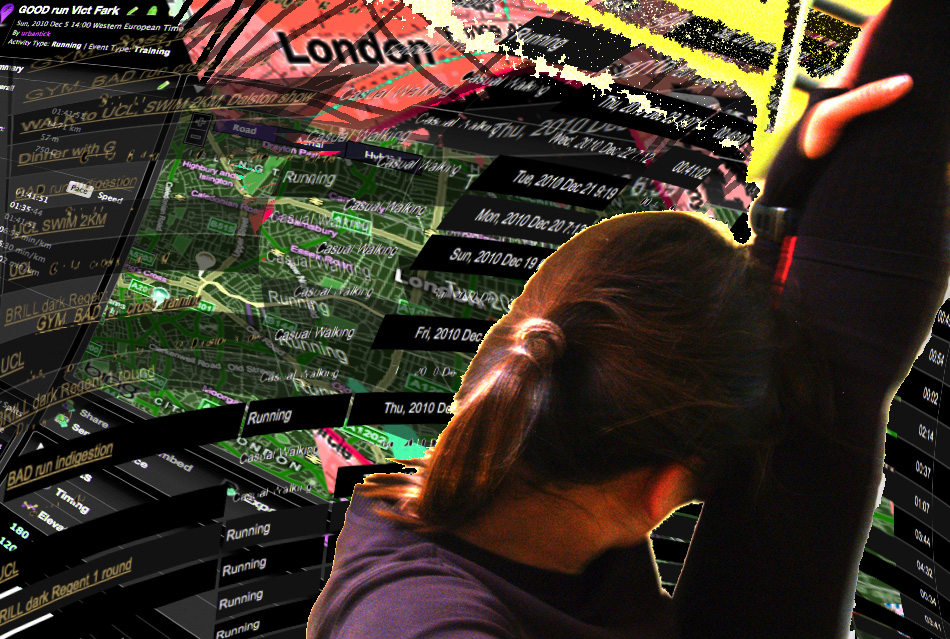
(Over) stretching ourselves to get geared up for more mindbodyblowing trans-dimensional runs (2 layers of socks) in the new year 2011.
Chris Marker, San Soleil, 1983: ‘Shonagon had a passion for lists: the list of ‘elegant things,’ ‘distressing things,’ or even of ‘things not worth doing.’ One day she got the idea of drawing up a list of ‘things that quicken the heart.’ Not a bad criterion I realise when I’m filming …’
Sei Shonagon’s elegant and evocative list, The Pillow Book, 1002 (italics ours): ‘Sparrow feeding their young. To pass a place where babies are playing. To sleep in a room where some fine incense has been burnt. To notice that one’s elegant Chinese mirror has become a little cloudy. To see a gentleman stop his carriage before one’s gage and instruct his attendants to announce his arrival. To wash one’s hair, make one’s toilet, and put on scented robes; even if not a soul sees one, these preparations still produce an inner pleasure. It is not and one is expecting a visitor. Suddenly one is startled by the sound of rain-drops, which the wind blows against the shutters.’
Kaidie’s list, post Xmas, 2010, on the cusp (cusp – what a lovely word) of an other new year, 2011:
1. The moment of realisation that our legs have been working in perfect synchronicity with our arms, mind, emotions, environment, weather, and that we had been un-self-conscious of this happening; that we have fully inhabited, embodied and embedded running.
2. The moment of realisation that we have been living+working+playing in the city of Nondon, and that we had been un-self-conscious of it; that we have fully inhabited, embodied and embedded ourselves in this great city.
3. When beginning to structure and write a new chapter (it soon gets extremely laboured and tedious, and is nothing but meticulous building, or precise shearing and stripping of, block by block, bit by bit).
4. Experiencing the transition/cut between from the black-and-white opening sequence of Tarkovsky’s Mirror (of a man overcoming his stutter) and the first scene of the film proper a-washed in luscious green.
5. Experiencing the transition/cut between the closing sequence of Marker’s Sans Soleil and the final credits (of 3 children on a road in Iceland); the moment when the woman moves in La Jetee (1962).
6. Experiencing the first notes of Glenn Gould’s rendition of Bach’s Goldberg Variations, and, with the assistance of good earphones, the melancholic-ecstasy in Gould humming/singing.
7. When water from the very hot shower first hits our skin after we emerge from the lukewarm swimming pool (afterwards, it is merely utilitarian).
8. In the first 30 seconds of acquisition, licking the foamy head off a very hot cappuccino thickly dusted with cocoa (but as soon as the bubbles fizzle off, so too, does our interest).
9. The moment of falling into a deranged, swirling, topsyturvy, eternal, divine love at first bite with toro sashimi shrewdly laced with fresh wasabi (how it stings!); ditto, at first sight and bite, with Sainsbury’s bakery’s 99p cheese twist (or that pecan and maple pastry thing 79p) (Our heart quicken, and misses a few beats. Gulp.)
10. The sudden / brief moment of mutual recognition of something of a spark of sorts happening (before it/whateveritis falls into numbing patterns that we run away from, and move on, hollering, ‘Enough!’, because we do not have the stamina or interest to sustain such a spark; that a spark is such only because it is momentary; anything longer than momentary ceases to be such).
WE TURN ONE ON 12.12.2010. WE HAVE 637 DAYS TO RUN TO LOOK FOR THE MEANING OF LIFE, before we die on the last day of the Nondon Olympics on 09.09.2012. That is the day we will cease our 1000-day quest.
One year ago, on 12.12.2009, we were born. Today, on 12.12.2010, we turn one. Before we die on 09.09.2012, we have 637 days left to look for a/ the Meaning of Life 3.0. We are Sagittarius according to our star signs – if you buy into / believe that school of thought/belief. To mark this occasion, we ran through the shopping districts of Nondon to the constellation pattern last month. But where oh where, on, or out of, googleearth might a/the Meaning Of Life 3.0 be?
We pondered on the question today, as we have for the last year of our lives. Needless to say we have arrived at no answer/solution/conclusion. Yet / hence, we are running as we have for the past year, and more so than ever before. It does not get easier, but we are keeping at it. We have also (more, or less) kept our hair uncut for the duration of the 1000 days, as a measurement of the passage of time, nodding to the 1-year performances of one of our favourite artists Tehching Hsieh.
To work on our grand(ious) question, and to mark this grand(ious) occasion of our birthday (DO WE HEAR YOU SAY THAT WE LOOK OLDER THAN OUR AGE?????), we decided to do 4 things:
1) To compile a list of things we have done in the past year. By no means exhaustive, this list proves that we have put in much effort (without much returns?), but, like any good road movie/quest, it is always the journey that matters. So we are getting there, or getting there there.
2) The second thing we did today was to listen to Sugarcubes’ Birthday.
3) The third thing we did today to mark our birthday was to visit our local cinema to watch Palme D’Or winner at the 2010 Cannes, Uncle Boonmee Who Can Recall His Past Lives, by one of our favourite filmmakers, Apichatpong Weerasethakul. Even for a hardcore believer/follower/user/advocate of the law of non-linearity like us, we found this work challenging – which is also one of the reasons why we adore Apichatpong (for, what fun is there is things were too easy and obvious??). When, in a previous life when we curated his magical Tropical Malady in the ‘South East Asian Programme’ at the Cinema South Festival near the Gaza Strip in Sderot, Israel, we had a clear epiphany that Apichatpong’s films are best enjoyed when one is in the hazy, stony, liminal state of being semi-asleep-and-semi-awakeness. That is what his work does too – pushing one to (one’s) no-man’s land, in the chaosmos of realities, being at once exposed and vulnerable, as well as most lucid and mindful, in the chaosmos of feeling ill, and feeling ill with happiness, cruelty and beauty, predator and prey, a cat and a fish (and an ecstatic encounter with a catfish). This is what Tarkovsky, Herzog, Chagall, Bach/Glenn Gould and Garin Nugroho do to us. It’s appropriate to have this done to us, on our first year running within and across Lives 1.0, 2.0 and 3.0.
4) Before doing all of that, we begin our day with a(nother) run. WE ARE ABSOLUTELY LIVID THAT ONE SECTION OF THE REGENTS CANAL IS CLOSED OFF DUE TO SOME RENOVATION/DEMOLITION WORK OF SOME SORT OR ANOTHER. So, no more canal-Victoria Fark runs for the next few weeks (or – horrors – months?!?!). We are back to loops at the Regents Fark.
Life goes on, or rather lives go on. As usual, if you have any advice for our quest, please DO write in. Contact us – click on comment here, or write to us at <dislocation@3rdlifekaidie.com>, become our friends on the evil FB, tweet us. There is more than one way to grab us.
Thank you for running with us in the past year. Are we ready to continue with the best run of our lifetime(s), this life, every life?
WE TURN 11-MONTHS OLD ON 12 NOVEMBER 2010. 667 more days to go/come/run, before we expire on the last day of the Nondon Olympics on 09.09.2012.
We turn 11-months-old today. BRAVA! Well done us, to have come this far. To celebrate we went to buy a glorious bunch of Brussel Sprouts from the market during our morning run. We are also chomping down the sprouts, which is one of our favourite Xmas vegetables, in anticipation of a nice Xmas 2010 and end of our ear. The smiley vegetable seller gave us an avocado for free when we told him that it’s our 11-month-old birthday. Wonderfullymushilycreamy comfort food indeed, but that brusselling bundle of joy was rather hefty as we lugged it on our run back. As an incentive to ourselves to carry on running, we held the bundle like so in the picture, in front of our face, to entice and lure us to carry our feet forward, one step at a time. With this tactic, we ran and reached home without any problems.
We ate the sprouts plain without relish, but with tremendous relish. In the face of so much green-ness, we don a green (well, turquoise, to be pedantic, but on the same wavelength, surely) top in this photograph. Our tongue is turning green with envy at our own very meaningful life, as we speak.
And my Dear Readers, how do you think we could mark our 1st-year anniversary on 12.12.2010 in a meaningful fashion? Wolf down an intense and big 70% intense cake? Bungee-jump from the Gherkin? Run 12 rounds at Regents Fark? Do 365 star jumps? Swim 12 km in an outdoor chlorinated pool? Do 12 good deeds? Save money for our next lives? Save the world? Get ourselves a new wardrobe of pink (or green?) running clothes? Get a life? Eat more greens, as Popeye-fuel for the next laps of our amazing Lives?, etc.
My Dear Conspirators of Pleasure, as you have in the past 11 months, do write in if you come up with wonderful ideas. Let’s see where we can go, together.
ONE DAY IN THE LIFE OF KAIDIE IN A MINUTE: 7 September 2010 Nondon.
What did Kaidie do on 7 September 2010, Tuesday in Nondon? Or rather, what did we see when we were going about our business on 7 September 2010 Tuesday in Nondon, our favourite city on earth and beyond? Wearing a small camera on our chest (which has been lent to us by Urbantick of the Centre of Advanced Spatial Analysis of University College Nondon), this is a 1-minute time-lapse record of what happened that day, including: walking amongst large crowds in the streets as tube workers went on a strike in Nondon (as usual); attending a panel discussion – with Stelarc in-world in Second Life; presenting our 50-minute performance AUTHOR slash ACTOR slash AUDIENCE at the DRHA conference at the Brunel University; travelling to and from Uxbridge.
And, with all due respect to the dwellers and denizens of Uxbridge, no, we would not/never/ever want to live in Uxbridge in a house with a spouse/family/kids/pets/cars. No thanks very much.
UPDATABLE GLOSSARY: YOU & I & US
GLOSSARY/ WIKI ABOUT THE UNIVERSE OF KAIDIE / LIFE 3.0,? AND THE THEATRE OF CHARACTERS (ongoing). SEEKING DEFINITIONS AND MULTIPLE + ALTERNATIVE DEFINITIONS! CONTRIBUTE NOW!
THEATRE OF PLAYERS IN THIS UNIVERSE- INCLUDING YOU!
* Audience:
* Author:
* Artist:
* Reader:
* User:
* Player:
* Producer:
* You:
* Me:
* We
* Antagonist:
* Protagonist:
* Your avatar(s):
* My avatar(s):
* Your online proxy:
* My online proxy:
* Your online proxies:
* Our online proxies:
* Your offline proxy:
* My offline proxy:
* Our offline proxies:
* Collaborator:
* Co-author:
* Conspirator of Pleasure:
* Co-runner:
*Running buddy:
* We are in this together:
As we fly 18,948km Nondon-Sao Paulo (return), WE WILL RUN 189.48km IN LIFE 1.0 BY 7 NOVEMBER TO MAKE UP FOR OUR CARBON FOOTPRINTS (yes we are wussy by moving a couple of decimal points, but better a pathetic gesture than none??)
As you know (do you? did you?), we are flying to Sao Paulo this weekend to participate in Soft Borders: 4th Upgrade! International Conference. In this gathering of artists, curators and academics from 30 countries, we will be making a 20-minute presentation of our fabulouslyfeetstompinglyheartstoppingmindblowing theory, Trans-Dimensional Running For Our Lives! A Rough Guide To A Critical Strategy For Our Technologically-Layered Multiverse Today. Seasoned (ahem) and weather-beaten (ahem) world- and out-of-the-world- travellers that we are, this will be the very first time that we visit ‘that part of the world’. So, our Dear Conspirators of Pleasure, should you have any tips (Where would be interesting places to run? What to eat? What to drink? Whom to meet? What to do? What to say? How to say? etc. But unfortunately, no, we are not able to drop by at Rio for the famous beaches and silicone…) about the trip, do let us know! And, as usual, if indeed your advice is so amazing as to afford us an amazing experience or two, we will create and publish a post here to share with everyone!
As trans-dimensional runners, we would have liked to fully practice and live what we preach, of course. Nonetheless, for us to run all the way from our favourite city on earth and beyond (thus far), Nondon, to Brazil, would take a while. At 9474km one way and a grand frolicking 18,948km return (!!!), it would take – to put it mildly- ages. Recall now that we live only for 1000 days, and we have only 695 (!!!!!!!!!!!ALREADY!!!!!!! Time flies whether or not we are having fun, however we define ‘fun’, or not) days left. so for us to run to Brazil and back, we would bust our given duration many times over, and be fropped left right centre.*
*It would be appropriate at this point in time for us to have a reality check and undertake some scientific calculations: Someone at our recent ARTSingapore gig asked us how much we have run in the past 305 days of our existence. Good question, we thought. We know that we run an average of approximately 60km a week – sometimes more, sometimes less. On some days, we have 5km quickies, of speed training (we say ‘speed’, but we are pulling [y]our leg[s], as we all know by now that when it comes to running we don’t/can’t do hit-and-run quickies, unless you release an repugnantlyyelpingly ridiculousness of a ‘dog’ of a chihuahua behind us, or, ahead of us, a glass of crisp bubbly, but otherwise, we will not/can not sprint, and our running is no where near the word ‘speed’ and its variations – we do endurance and go the whole length for hours and kilometres [for instance, 1 kilometre per hour], but we simply just don’t Bolt, sorry) on the treadmill or elsewhere, and on others, we run outdoors for approximately 10-20 km. To deduce that we have run approximately a total of 2500km in the past 300 days should not be all that far from the truth, which works out to be an average of 8.3333km per day). All that said, we must confess that some days we do not run, but run off instead to conduct our illicit and addictive affair with an old and very brilliant flame, chlorine. (By definition, any affair would taste sweet because they are affairs [whether or not the affairs themselves are of any good]; illicit affairs are even sweeter, and intrinsically and necessarily so, simply because of their illicitness… Hence, in spite of our vocation/mission of trans-dimensional running in this life, our ongoing stubborn dalliance with swimming in madmade pools…)
Several of your would recall a previous trip that we undertook, to visit our Facebook Friend, the legendary Heidi, in Heidiland (YES HEIDILAND EXISTS), Switzerland, during our 3rd-lifer-In-Residency in Winterthur. The return journey between Nondon-Zurich was 1550km, and after several days of wrecking our brains, we worked out a sophisticated and sustainable system of a means to compensate for our dirty carbon footprints. We understand that not all of you are as mathematically able as we are, so, to explain it in very simple means for you, it suffices to say that our system involves the movement of the decimal point to a position that would render the distance run-able for us, within a decent period of time.
Now, our Dear Fellow Runners, do understand that decency is the governing concept here- for our ‘system’ of repayment of our carbon footprints has to be sustainable and do-able. Running 18,948km would have taken us AT LEAST 1894 days if we run an average of 10km a day, which is 894 days over and above our lifespan (and we have already spent 305 days). Running 1894.8km would still take us about 189 days or 6 months. Also, we are currently in discussion with Japanese art workers about a trip in December/January/February to Asia as part of a project, which would cost at least 10,000 km – ONE WAY. As already argued in January when we undertook our trip to Switzerland, we had already acknowledged that this is but a gesture, and there is no thing big enough we can ever, ever do to compensate for our continual slow smothering of the earth. Apart from having vowed from day one (actually day zero, many life cycles ago) not to create mini-mes to add even more wrongs to all the wrongs that are already happening and all the wrongs that we are already committing, we are also cutting short our lives, and making us put in physical effort every time fly. We have heard of some other gestures such as making donations to have trees planted whenever one flies, but we are uncertain of the impact of such a deed – it does not hurt those with deep pockets and merely buys them out of their guilt (as Zizek has eloquently and sweatily articulated elsewhere). Insofar as all gestures are vain, our tactic of running to repay for our carbon footprints amounts to not much (if anything) either, but as it requires one to put in slightly more physical effort (other than the physical effort of clicking a button to agree to donate money to plant a virtual tree and alleviate one’s guilty conscience), it certainly makes one (us for instance) think twice about flying. And we speak as guiltyfrockers who absolutely adore being in mid-air in large machines, suspended in time, space, cultures, nations.
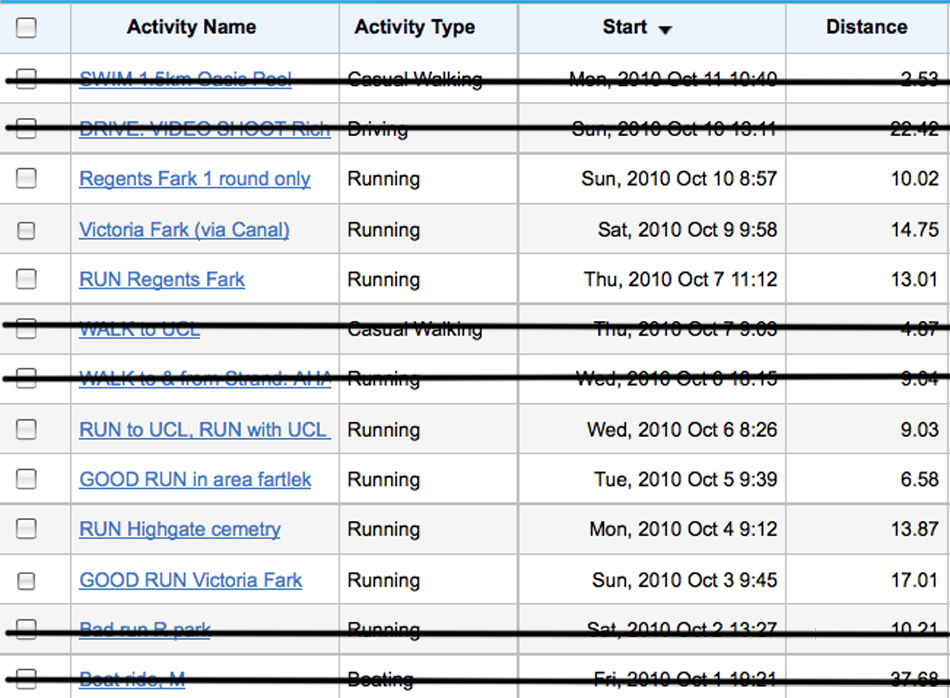 As we can’t spend the rest of our lives to pay for our Nondon-Brazil return journey, we will move not one but TWO decimal points, to run a total of 189.48km by the end of this month. We begin this repayment from 3 October, when we properly resumed our running (after resting for 2 weeks on our laurels and gloating in the glory of our completion of our first Life 1.0 marathon). So far, over the first 7 days, we had covered 84.27km. Note that although we had had some lovely walks (and a funny dip in Thames!) with some of you during this time, they are not counted, as we will only consider running, and of distances above 5km at any one time. We have 15 days left to run the remaining 100km or so, so we’d better get our magnificent inertia and monumental butts moving.
As we can’t spend the rest of our lives to pay for our Nondon-Brazil return journey, we will move not one but TWO decimal points, to run a total of 189.48km by the end of this month. We begin this repayment from 3 October, when we properly resumed our running (after resting for 2 weeks on our laurels and gloating in the glory of our completion of our first Life 1.0 marathon). So far, over the first 7 days, we had covered 84.27km. Note that although we had had some lovely walks (and a funny dip in Thames!) with some of you during this time, they are not counted, as we will only consider running, and of distances above 5km at any one time. We have 15 days left to run the remaining 100km or so, so we’d better get our magnificent inertia and monumental butts moving.
Watch this space for our updates, and cheer us on. Or, go right ahead to mock and boo us for being such a wuss, but we are trying, alright?
RUNNING THE NEXT LAPS OF THE LONG-RUNNING BODY vs MIND vs TECHNOLOGY vs SOUL DISCOURSES. Trans-dimensional running as a critical strategy for our techonologically-layered multiverse.
Trans-dimensional running is as much a visceral counterstrike as it is a celebration of our technologically-expanded lives. As we run trans-dimensionally, we embody both the techno-utopianist Cyborg as well as the fragile, flesh-and-blood animal. We have one foot embedded in the physical world, and the other afloat in the non-physical and metaphysical worlds, detached from worldly matters. Technology permeates the activity of running, as it does in almost every aspect of our lives today. Yet, running could arguably be an act that utilises the least technology. In its most unembellished form, practitioners can run shoeless[1] – and indeed naked, as Pheidippides did 2500 years ago. Trans-dimensional running is a simple means of navigation in the digitally-saturated reality today. Running across the varied topographies, no one is in a better position than the trans-dimensional runner to tease out the long-existing as well as current debates of the battles between body, mind and technology. The undertaking of any endurance sport is a training of not only physical but mental resilience. In exercising our body and mind to revel and wrangle with our technologically-enhanced realities, the trans-dimensional runner has one foot in a techno-utopianist delirium (Clay Shirky et al), the other in a scepticism (Michael Zimmer et al). Running is a visceral counterpoint to the relentless development of technology. Web 2.0’s (somewhat ironically-named) social media was constructed by and for the geek –socially dysfunctional in Life 1.0– to virtually do virtually everything online without ever leaving one’s chair (or flat). While we celebrate our newfound ability to leave our bodies behind and run off into metaverses online,[2] pounding the pavements in meatspace immediately pulls us back to earth (and nature), reminding us the presence and limitations of our flesh-and-blood machines, and, indeed, our mortality.
And to the snobs (invariably bound to the armchair) who say that running is unthinking, one’s mind must work as actively as one’s body when one is running, as runners and sport psychologists attest.[3] When the body hits the metaphoric wall, only willpower and imagination can propel the runner to complete the last 6 miles of a 26.2-mile race.[4] When the body undergoes extreme states of duress, the chemicals in the brains pushes the runner into an altered state of consciousness.[5] At an optimal level, this can be the proverbial ‘flow’, a notion of focused motivation put forward by psychologist Mihaly Csíkszentmihály. As Daniel Shiffman, creator of open-source software Processing says, ‘I do all my best programming while jogging.’ [6] We also do not forget that Alan Turing, who was a highly-accomplished marathon-runner,[7] was said to have invented the beginnings of the computer in the middle of a run.[8]
Who better than the mythical ‘Marathon Monks’ of Mount Hiei, Japan, to refer to in the discussion of the importance of the lucidity of the mind (and spirit) when the body runs? While we are not unfamiliar with ascetic feats that humans are capable of in the bid to attain enlightenment (as seen in the fervent twirling of the Dervishes, and the practice of fire-walking of Hindus, just to name a few), the achievement of these monks still seem out of the world. The tofu-eating monks of the Tendai sect chant – while carrying scriptures, and running and walking for a total of 1000 days across a period of 7 years, in a practice called the kaihogyo. Running the equivalent of 2 marathons daily for a large part of the task,[9] the monk must cover a total distance of around 40,000 kilometres, equivalent to 1000 marathons.[10] In an exercise that already sounds like no walk in the park, the monk must go without food, sleep and drinks for a stretch of nine days as well.
Talk about effort. Perhaps those self-proclaimed Cyborgs and Cyborg-lovers (Donna Haraway, as well as the Orlans and Stelarcs) – could come out of their ivory towers and learn from the practice that has begun since the 18th century, which has feet firmly on the ground, while reaching for (self-) transcendence. Our ‘1000-day run’ is a mockery to the phrase when compared to this extraordinary synthesis of the mind, body and spirit…
[1] Vijai Singh, Barefoot Running – Video Library – The New York Times [accessed 12 July 2010]. In this video, we see that the writer of Born to Run: The Hidden Tribe, the Ultra-Runners, and the Greatest Race the World Has Never Seen, Professor Christopher McDougall also runs barefeet.
[2] Tim Guest, Second Lives (Arrow Books Ltd, 2008) p. 355.
[3] Such as Costas Karageorghis, ‘Sport Psychology: How Mental Imagery and Self-Hypnosis Can Improve Performance’, Peak Peroformance: Sporting Excellence [accessed 25 September 2010].
[4] As Barry Magee, bronze winner of the marathon in Rome, 1960 says, ‘(a)nyone can run 20 miles. It’s the next six that count.’ Quoted in ‘Running Quotes | Training & Racing’, Run the Planet: World Wide Resource for Runners, 1996 [accessed 24 September 2010].
[5] As discussed in such literature as Henriette van Praag, Gerd Kempermann and Fred H. Gage, ‘Running Increases Cell Proliferation and Neurogenesis in the Adult Mouse Dentate Gyrus’, Nat Neurosci, 2 (1999), 266-270.
[6] Daniel Shiffman, Learning Processing: A Beginner’s Guide to Programming Images, Animation, and Interaction (Morgan Kaufmann, 2008), p. xii.
[7] Although Turing did not manage to be selected for the 1948 Olympics, having come in fifth, his best time of 2 hours, 46 minutes, 3 seconds, achieved in 1947, was only 11 minutes slower than the winner in that Olympic Games. John Graham-Cumming, ‘An Olympic Honour for Alan Turing | Comment Is Free | Guardian.co.uk’, 2010 [accessed 5 July 2010].
[8] According to 1968 Boston Marathon winner Amby Burfoot in the foreword (p. ix), in Michael W. Austin, Running and Philosophy: A Marathon for the Mind (Wiley-Blackwell, 2007), p. 135.
[9] Jayne Storey, ‘Running Buddhas. Ultra-Endurance and the Spiritual Athlete’ [accessed 10 July 2010]. According to Storey, the full menu of the monk’s 10000-day feat, the Sennichi Kaihogyo, is as follows: ‘1st year: 100 consecutive days of 26.2-mile marathons, beginning at 1:30 a.m., each day after an hour of prayer. 2nd year: 100 consecutive days of 26.2 mile marathons. 3rd year: 100 consecutive days of 26.2 mile marathons. 4th year: 100 consecutive days of 26.2 mile marathons – performed twice. 5th year: 100 consecutive days of 26.2 mile marathons – performed twice. On the 700th day, the monks undergo a 9 day fast without food, water, rest or sleep – a mind-boggling feat which would result in certain death for most human beings, before having a short rest of a few weeks and increasing their gruelling schedule. 6th year: 100 consecutive days of 37.5 mile marathons. 7th year: 100 days of 52.2 mile marathons and 100 days of 26.2 mile marathons.’
[10] Anthony Kuhn, ‘Monk’s Enlightenment Begins With A Marathon Walk’ (NPR, 2010) [accessed 11 July 2010].
Images on this page are photographed by Michael Larsson.
CHAT WITH KAIDIE ‘LIVE’ SATURDAY 16:00hrs + SUNDAY 18:30hrs (Singapore time)! We’re at ‘kaidie3rdlife’ on Skype.
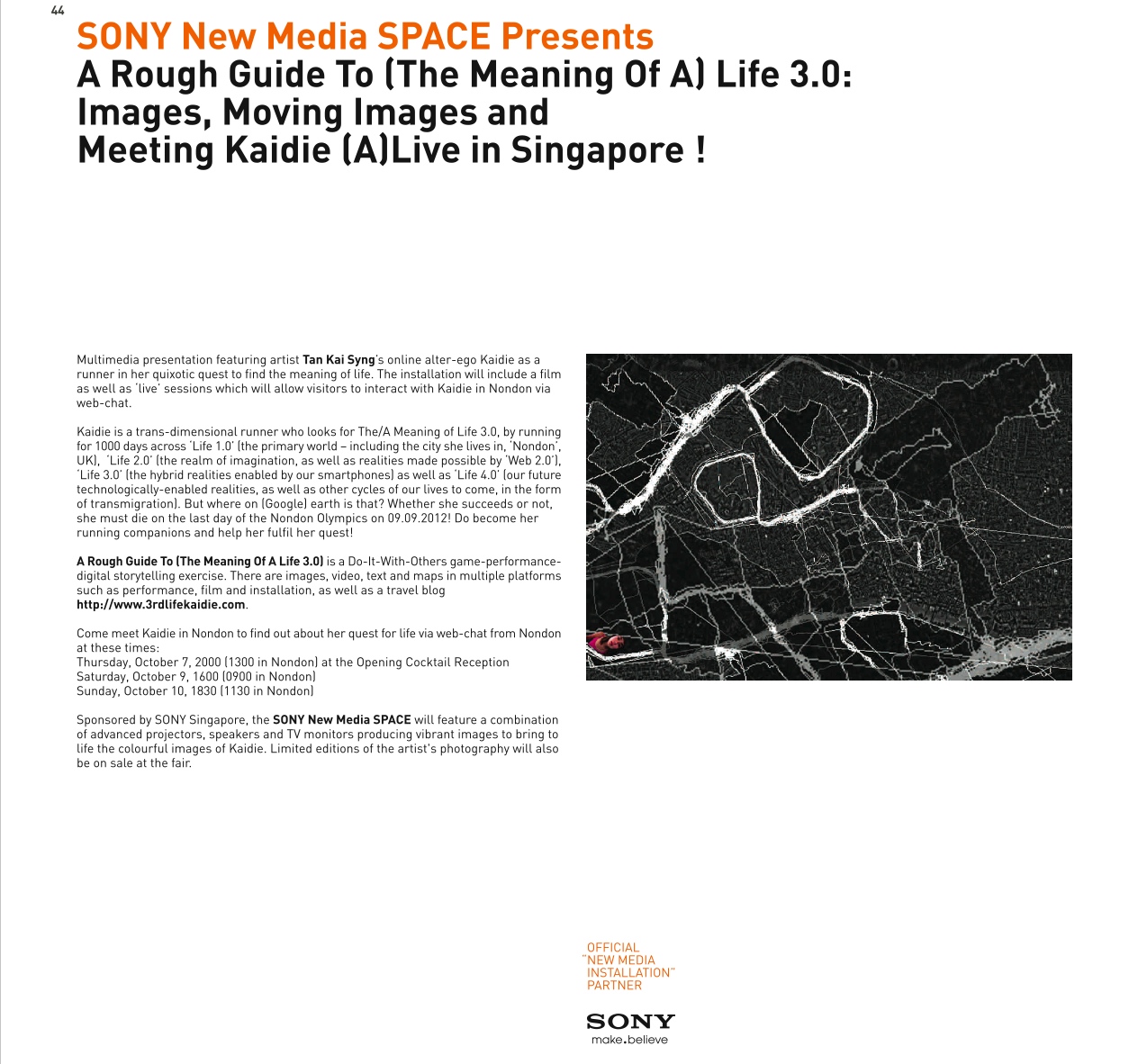 Above: From the ARTSingapore catalogue. Below: from I-S magazine, Singapore.
Above: From the ARTSingapore catalogue. Below: from I-S magazine, Singapore.
SETTLE YOUR SCORE WITH KAIDIE THIS THURSDAY, SATURDAY AND SUNDAY! ‘LIVE’ at ART SINGAPORE 2010. Plus prints and 50-minute film.
For more information, visit the Art Singapore website, or contact Florence Fang at Flame Communications. For information of other sorts, or if you wish to run with us, contact any one of us (Kaidie, Kaidie Nondon, 3rdlifekaidie, kaidie3rdlife, Kaidie Absent, Kai Syng Tan, et al). Stop sitting around and come on board!
MOVING ON: GOODBYE KINGS KROSS, GOODBYE SUMMER
Now that it is October, now that we have to start replacing our running singlets and shorts with running tights and over our dri-fit singlet a long sleeved T-shirt that is removable mid-run when we are sufficiently warmed up, now that the humidity is fading, now that the sweating has ceased, now that hot soups provide more comfort than raw food, now that we are layering ourselves with jumpers and scarfs, now that we wear socks again, now that the sandals are put away because the toes are cold in those, now that we do not want to commit the fashion faux pas of teaming socks with sandals (even in matching or interesting colour combinations), now that when we go out we put our fingers in our pockets, now that we have moved, now that we have moved on, now that Kings Kross, and photographs of Kings Kross captured on our memory machines are but things of a/the past, now that these people captured one August afternoon on a Sunday have left, now that Sundays have no sun, now that there is no difference between Sundays, Saturdays, Fridays, ThursWedsTuesMondays, now that there is no difference between day/night, now that the windows are shut, now that the duvets are out, now that when we wash our hands we turn on the tap with the red mark too and then because water from it is always too hot as if 60 degrees celsius or so we have to do a to-&-fro-ing between this and the other tap with a blue mark, now that we want to run more so that we stop feeling cold, now that we are entering our 10th month of existence, even though being afloat at the the outdoor heated pool feels like being in an oasis even more than before perhaps in defiance of the changing weather, even though the clocks are still on British Summer Time, even though our Summer and Summery restlessness is still around perhaps more again in defiance or because it really is season-and-weather-resistant, even though Regents Fark remains our Favourite Fark, even though we may say this till the cows come home, even though our relationship with cows are limited to the supermarket and sometimes with human animals whom we may not favour and hence call them by that name, even though we are reluctant, we hereby officially declare (our) official Summer as officially over, and welcome Fall.
Unofficially, however, we are open for negotiations.
If you think you’ve got a good deal.

